
Artwork: Amanda Maciuba, Trace II (Nemaha, Nebraska), 2023, monotype and relief, 17 x 23 inches, photo by Aaron Paden.
Watershed: Elizabeth Rubendall Artist-in-Residence Amanda Maciuba
April 4–September 20, 2025
Amanda Maciuba’s work is an exploration of the visible and invisible marks of human hands on the landscape. Her practice investigates human relationships with the environment over time, forefronting the impacts of human-driven climate change. She exposes and reconsiders the layered histories of specific locations: from the geologic forces that shaped the land, to impacts of Western colonialism, to the current practices of development, destruction, and restoration by the local communities she interacts with every day. Bodies of water often act as anchors for Maciuba’s creative investigation. Watershed is an exhibition of prints, artist’s books, and installations that consider how water shapes human life and how our actions impact river environments in return.
Maciuba is the Great Plains Art Museum’s 2025 Elizabeth Rubendall Artist in Residence. Visit the artist during her residency at the museum from April 8 to 19. Learn more about the residency and scheduled events here.
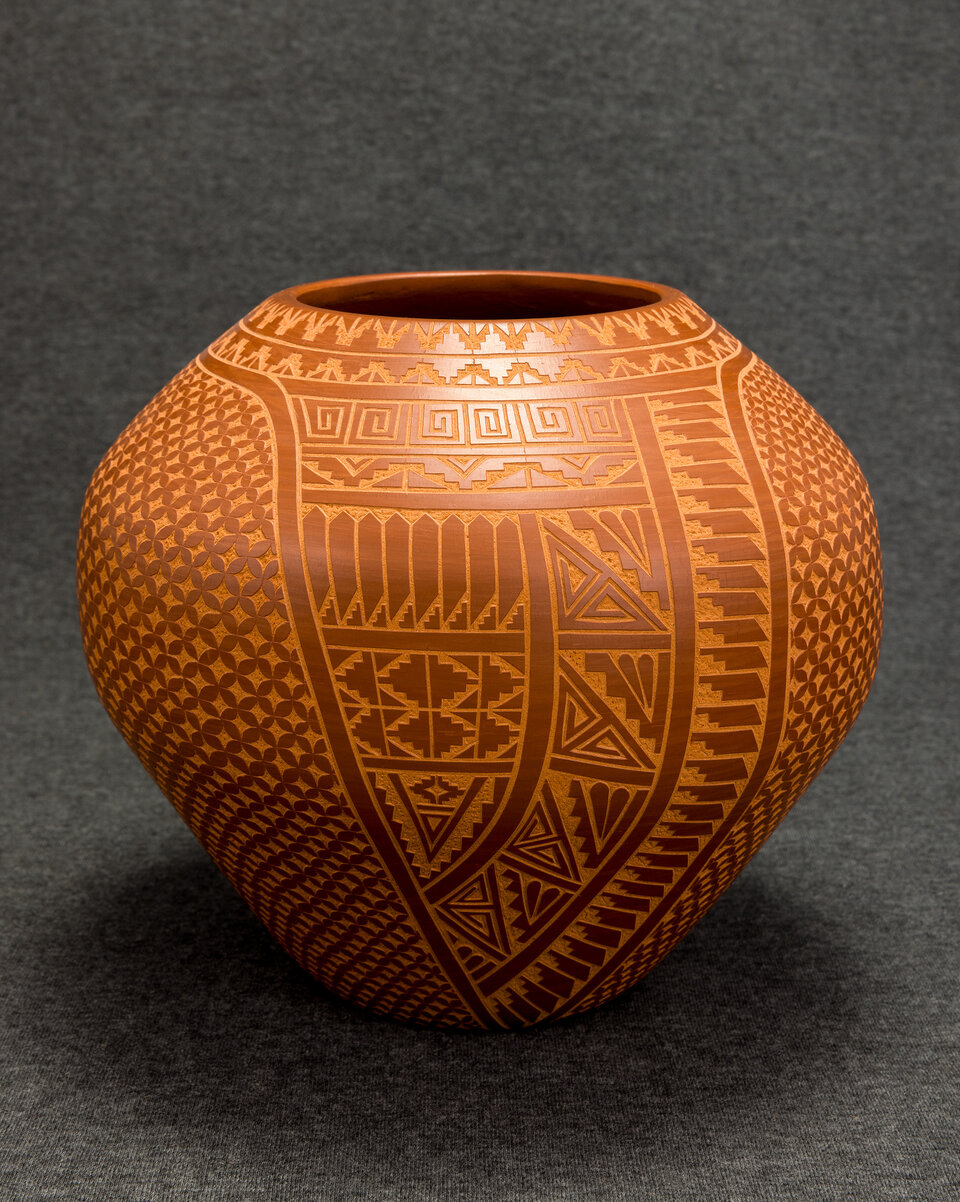
Wilma Baca-Tosa (Jemez Pueblo, b. 1967), Jar, 2009, ceramic with sgraffito, gift of Lehn and Mary Straub through the University of Nebraska Foundation
Shaping the Southwest: Pottery from the Collection
May 27–August 23, 2025
Shaping the Southwest features pottery from a recent donation to the Great Plains Art Museum’s permanent holdings by local collectors of Southwest art, Lehn and Mary Straub. This intimate exhibition in the museum’s Mezzanine Gallery highlights the impressive technical skill of these Indigenous artists and the continuation of the long tradition of Southwest pottery.

The Journey: Documented Items/Undocumented Souls
March 7–August 23, 2025
The Great Plains Art Museum collaborated with the Nebraska Commission for the Blind and Visually Impaired and Tactile Images, a subsidiary of 3DPhotoWorks LLC, to bring this transformative tactile exhibition to our community. This partnership marked a significant milestone in enhancing accessibility, empowerment, and inclusivity for individuals with diverse abilities in Nebraska.
The Journey presented a photographic essay chronicling the immigrant journey from Latin America to the United States through a deeply moving and impactful series of images by Getty Images Senior Special Correspondent John Moore. Moore captures the story through items that have been lost or discarded—and later documented—along the way. He also talks about his experiences and these photographs as part of the audio included in the tactile displays.
Tactile Images is dedicated to breaking down barriers for blind and disabled individuals in a predominantly sighted world. Through innovative tactile printing techniques, the company provides transformative experiences for the visually impaired, offering tactile exploration of visual and graphic materials accompanied by braille text, audio narratives, and scents. With a focus on accessibility, empowerment, and inclusivity, Tactile Images is committed to making knowledge and experiences accessible to all.
This exhibition was developed by TactileImages.com in association with the Nebraska Commission for the Blind and Visually Impaired, Getty Images, the National Federation of the Blind, and the Alliance for Inclusive Design and Experiences (AIDE). Photos by John Moore.
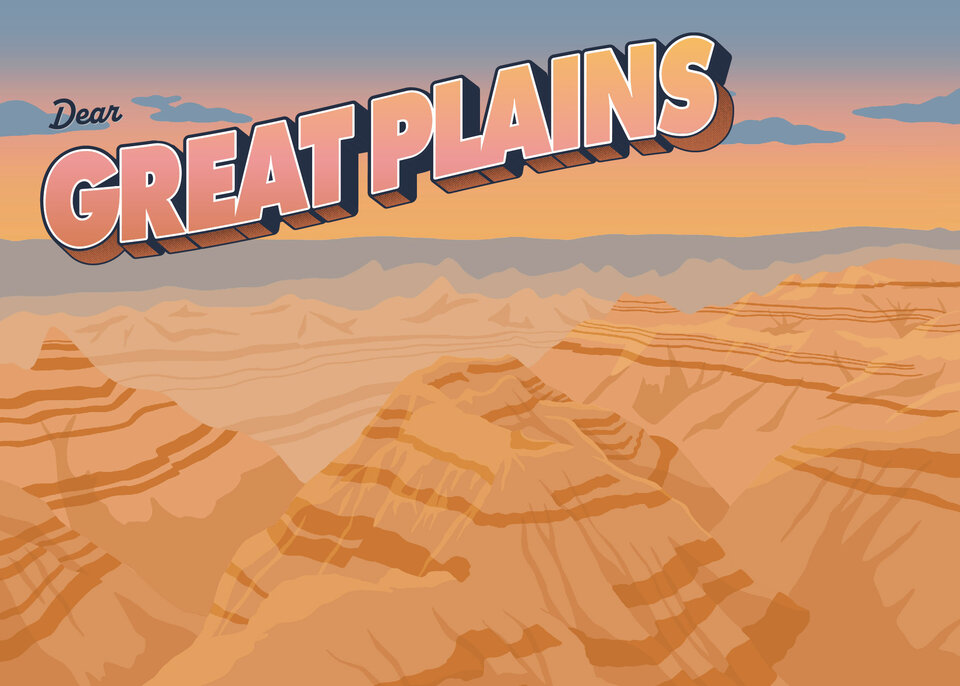
Dear Great Plains
November 1, 2024–May 17, 2025
Dear Great Plains is a postcard-writing campaign created by Great Plains Student Storyteller in Residence Karla Hernandez Torrijos. The project hopes to tell a different story of the Great Plains: more complex, more diverse, and more nuanced. Karla asked letter writers to consider their bond with the Great Plains and spent time collecting them from various communities and online. Visit the Mezzanine gallery to read these postcards and add yours to the exhibition.
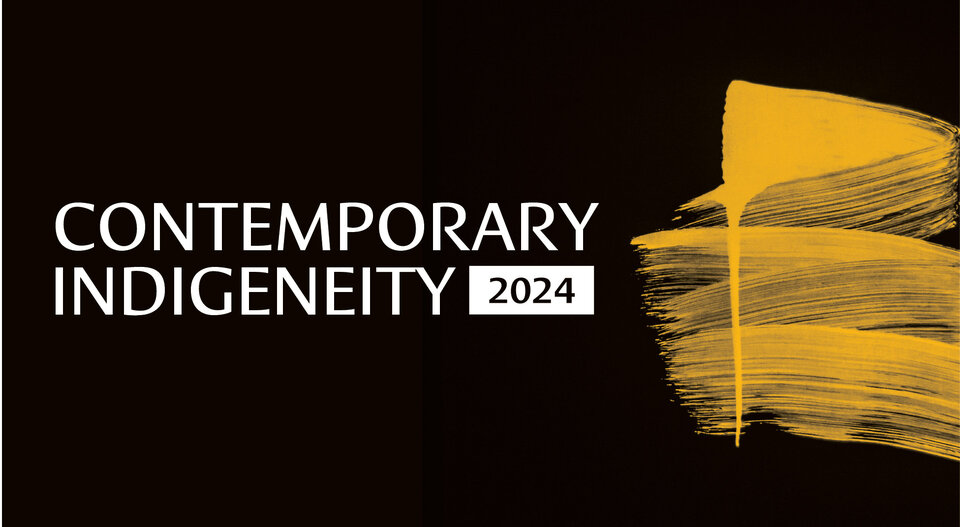
Contemporary Indigeneity 2024
September 6–December 20, 2024
Contemporary Indigeneity 2024 features over 25 Native American artists from across the Great Plains. For the fifth iteration of this exhibition, the Great Plains Art Museum sought Native American artists addressing any issues and themes relevant to the contemporary Indigenous experience on the Great Plains. A panel of Native American art professionals reviewed the submitted work and made selections based on the artwork’s aesthetic merit and contribution to the field of contemporary art.

Douglas Duer, Untitled ("Bess, I'll Not Go Again" Illustration for Zane Grey’s Riders of the Purple Sage), circa 1912, oil on canvas, gift of Jean and Robert Mills
Confronting the Legendary West
August 2–December 14, 2024
This exhibition continues the themes of the Center for Great Plains Studies’ 49th annual conference, Confronting the Legendary Great Plains, by focusing on the complex mythology of the American West. Confronting the Legendary West includes works from the Great Plains Art Museum’s extensive collection of western art and considers the perspectives that have—and have not—been included in the art that tells the stories of this region.
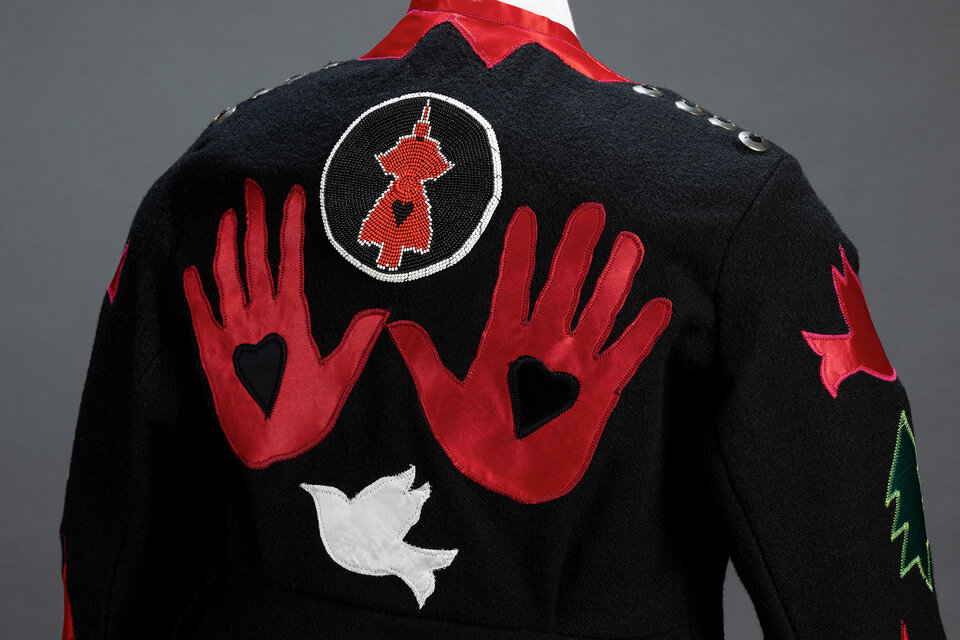
Ix’ą broge waxonyitą ke/ki (Every Life is Sacred)
May 17–October 26, 2024
I am Mihą Xege, Faded Woman (Tamara Faw Faw). I am Jiwere-Nut'achi, Otoe-Missouria. I specialize my art within tribal history, language, and regalia. I have created art in some form since around 1974. I received my BFA from Kansas State University in 1999 and have been a freelance artist, graphic designer, and painter since 2000. I utilize many different art genres to create my work. I have been a seamstress for over 30 years and make traditional Otoe-Missouria and Iowa southern cloth regalia and jewelry. I use illustration and graphic design to create digital images. I also design contemporary earrings featuring historical maps and photographs of Otoe-Missouria and Iowa lands and people. I concentrate my efforts into bringing back to life what once was old and forgotten to honor the Ancestors.
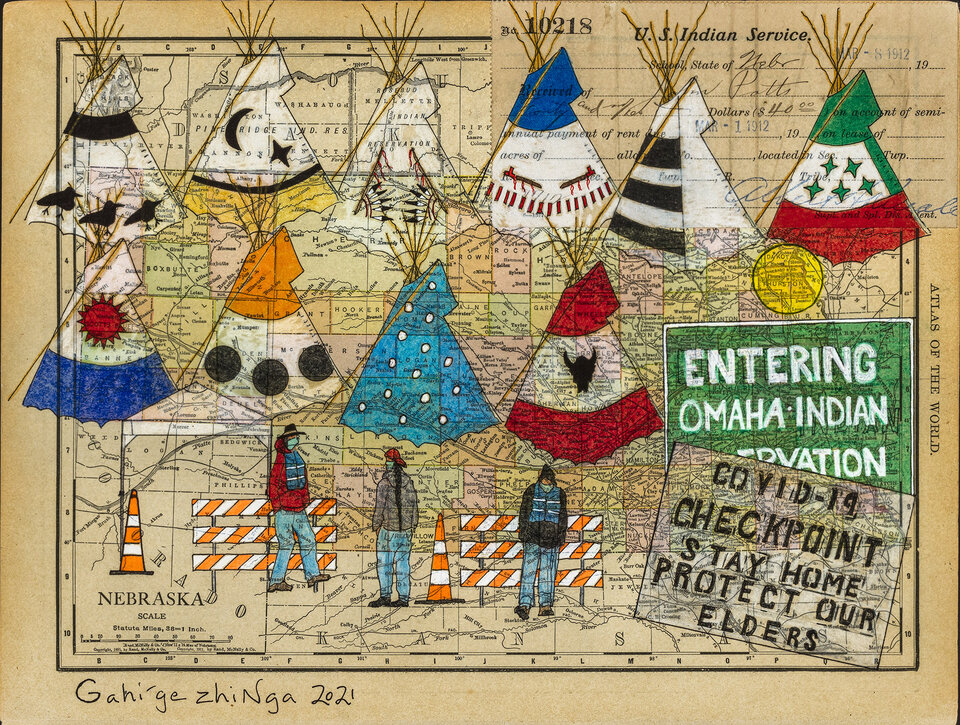
Eddie “Gahi’gezhiNga” Encinas (Omaha Tribe of Nebraska), Home Sweet Home!?, 2021, ink, colored pencil, and gel pen on 1911 antique map, museum purchase through the generosity of BNSF Railway Foundation. © Eddie “Gahi’gezhiNga” Encinas. Used by permission.
Recent Acquisitions 2024
May 17–August 24, 2024
This exhibition brings together a selection of artworks that have been added to the Great Plains Art Museum’s collection in the past two years. Showcasing the diverse media and subject matter found in the permanent collection, Recent Acquisitions 2024 features a number of works that have never been displayed at the museum.
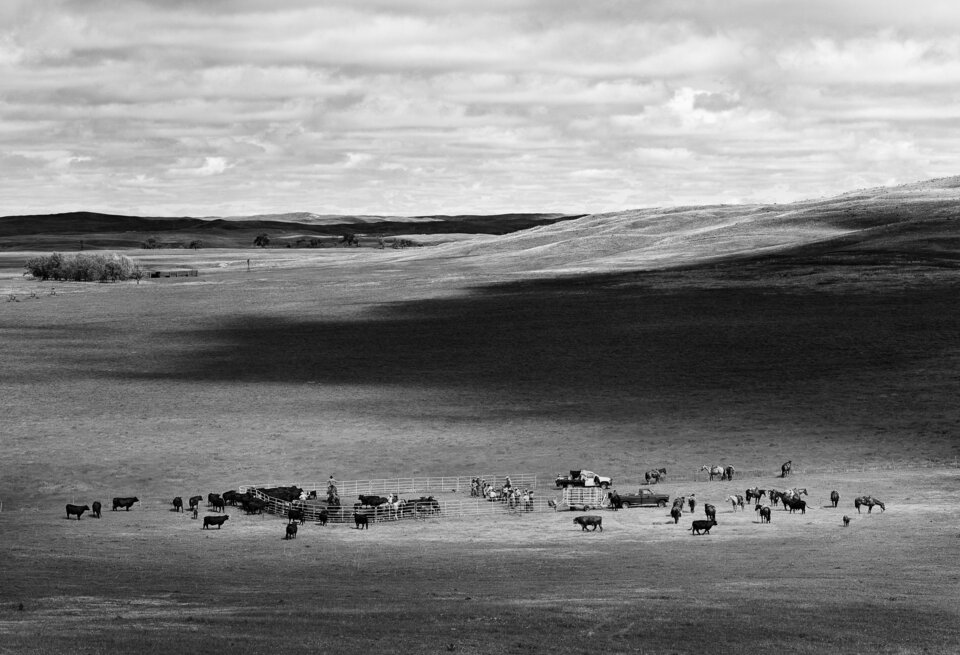
Haythorn Branding ’95, 1995, gelatin silver print, gift of the artist through the University of Nebraska Foundation. © Charles W. Guildner.
Charles W. Guildner: Selections from the Collection
May 17–August 24, 2024
Charles W. Guildner’s black-and-white images document the farms, ranches, and small communities of the rural heartland. Featuring selections from the museum’s extensive collection of Guildner’s photographs, this exhibition highlights his Lives of Tradition series and includes many recent acquisitions.
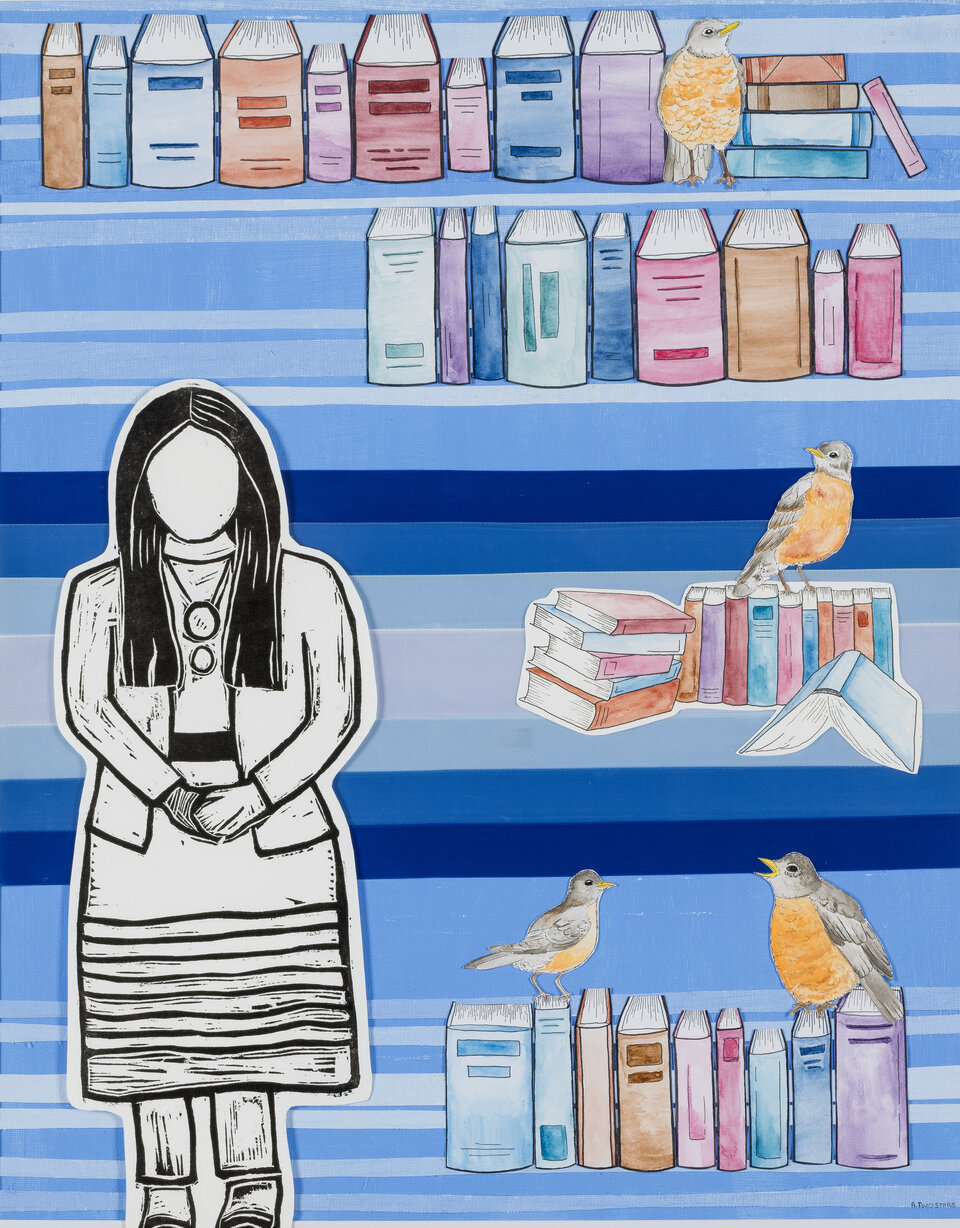
Angela Two Stars (Sisseton Wahpeton Oyate), Wótehiŋda, Wóawaŋyaŋke, Wóohoda: Love, Care, Respect, 2024, acrylic, ribbon, paper
(Re)Connected: Elizabeth Rubendall Artist-in-Residence Angela Two Stars
March 1–July 20, 2024
The Great Plains Art Museum’s 2024 Elizabeth Rubendall Artist in Residence is Angela Two Stars, a multidisciplinary visual artist, public artist, and curator. By reconnecting with the Dakota language and her ancestral homelands, Angela Two Stars addresses healing from historical, intergenerational, and personal traumas in her recent work. About this exhibition, she writes: “Through personal, vulnerable installations and performances, (Re)Connected boldly addresses issues that have caused the traumas endured by Native women but also highlights their strength, beauty, and resilience, as well as their roles as leaders, caretakers, life-givers, and protectors of all their relations.”
Angela is the director of All My Relations Arts, a contemporary American Indian art gallery and arts program that is a project of the Native American Community Development Institute in Minneapolis, Minnesota. Angela is an enrolled member of the Sisseton Wahpeton Oyate and received her BFA from Kendall College of Art and Design. Her professional arts career began at All My Relations Arts gallery as an exhibiting artist, which then led to further opportunities, including her first curatorial role for Bring Her Home: Stolen Daughters of Turtle Island, a powerful exhibition highlighting the ongoing epidemic of missing and murdered Indigenous women. Angela's public art graces the shores of Bde Maka Ska in Minnesota and honors the Dakota people of Mni Sota. Her sculpture, Okciyapi, was acquired by the Walker Art Center and is permanently installed in the Minneapolis Sculpture Garden. Angela also has public works installed at the Ordway Center for the Performing Arts, the City of Minneapolis Public Works building, and additional locations throughout the Twin Cities.
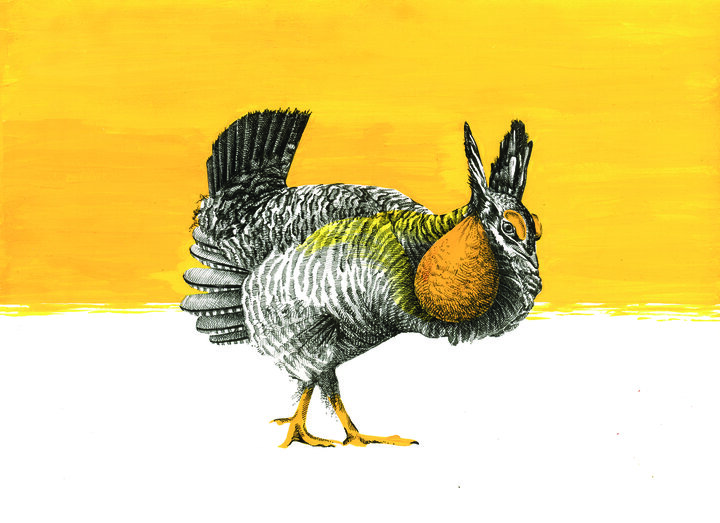
Sarah Kaizar, Attwater's Greater Prairie-Chicken, Tympanuchus cupido attwateri, 2021, gouache, pen and ink, 16 x 20 inches. Courtesy of the artist.

Sarah Kaizar: RARE AIR
January 23–May 4, 2024
This family-friendly art exhibition features original gouache and ink artwork from the book RARE AIR: Endangered Birds, Bats, Butterflies, and Bees. Authored by Philadelphia-based illustrator and designer Sarah Kaizar, and featuring writings by A. Scott Meiser, RARE AIR focuses on diminishing flighted species and citizen science. The exhibition, which shares the book’s stories and research, features striking visuals and interactive elements that connect visitors of all ages to the diversity of our ecosystems and the extraordinary creatures that populate them. Kaizar’s work enables audiences to recognize and appreciate the winged species that share our world and offers strategies—big and small—to slow or reverse the threats that face them.
Sarah Kaizar’s work has been seen in regional galleries and museums including the Woodmere Art Museum, Delaware Contemporary, and the Schuylkill Center for Environmental Education. She was a recipient of the 2021 Wind Fellowship by InLiquid and the Dina Wind Foundation and completed a residency at the University of Nebraska’s Cedar Point Biological Station in the summer of 2021. Kaizar is also the author of HIKER TRASH: Notes, Sketches + Other Detritus on the Appalachian Trail, an illustrated work based on her experience hiking 2,200 miles from Georgia to Maine. It was published by Mountaineers Books in 2019.
This exhibition was made possible through the generous support of The Puffin Foundation, the Center for Biological Diversity, the Academy of Natural Sciences of Drexel University, Wild Birds Unlimited (Buckingham, PA), the Joseph Robert Foundation, and the University of Nebraska–Lincoln’s School of Natural Resources.
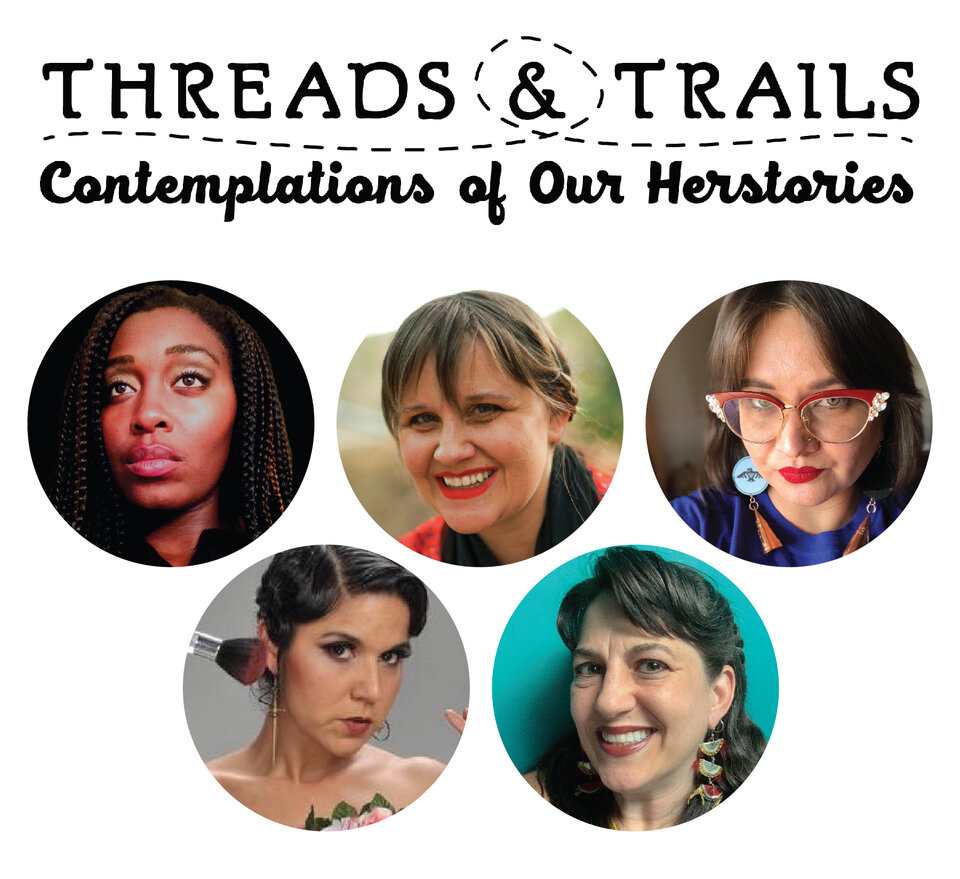
Threads & Trails: Contemplations of Our Herstories
October 6, 2023–February 17, 2024
Threads & Trails: Contemplations of Our Herstories is a collaborative exhibition created by five female-identifying artists who connect their personal histories to the conquest of the American West and Indigenous dispossession. Featuring the work of Erica Larsen-Dockray, Cybele Moon, Steph Coley, Eve-Lauryn LaFountain, and Marissa Magdalena Sykes, Threads & Trails is an installation that explores the experiences of women from the past and present in a space that is immersive, enlightening, inclusive, and transformative.

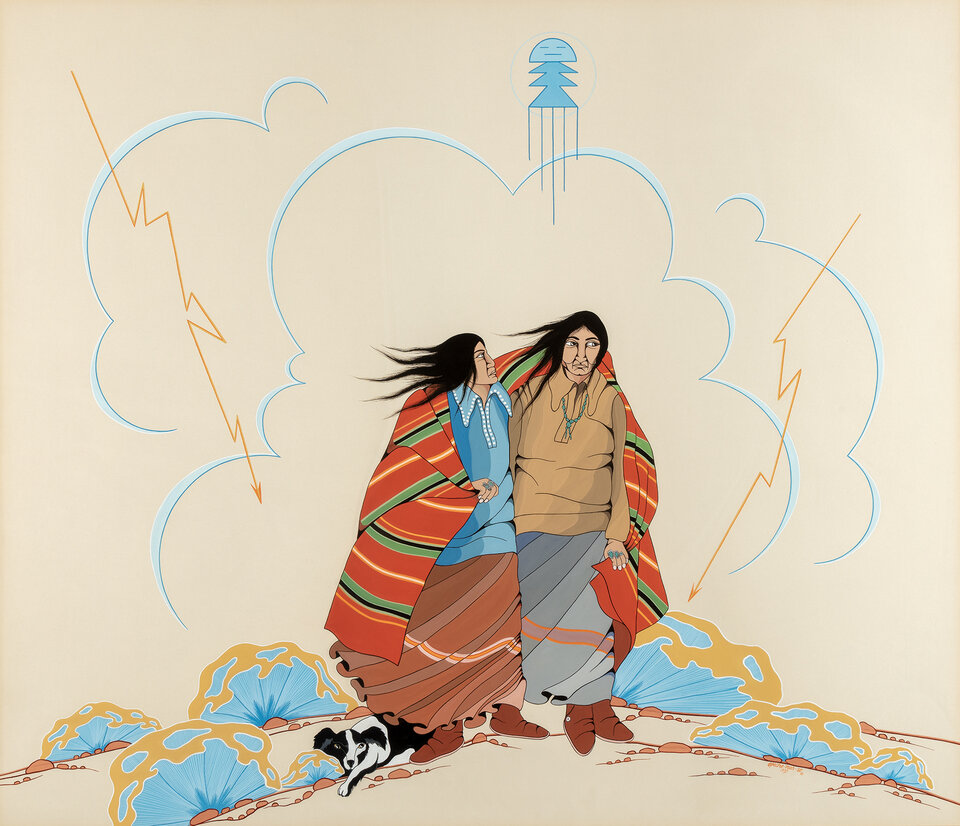
From Paintbrushes to Camera Lenses: Creative Women of the Great Plains, Part II
July 25–December 16, 2023
First floor, Main and South Galleries
In fall 2018, the Great Plains Art Museum mounted From Paintbrushes to Camera Lenses: Creative Women of the Great Plains, an exhibition that highlighted exceptional work created by female artists from the museum’s permanent collection. To complement other female-focused exhibitions on view during fall 2023, the museum is organizing part two of this exhibition to showcase many recent acquisitions and other works from the collection by women that were not shown in the first installation.
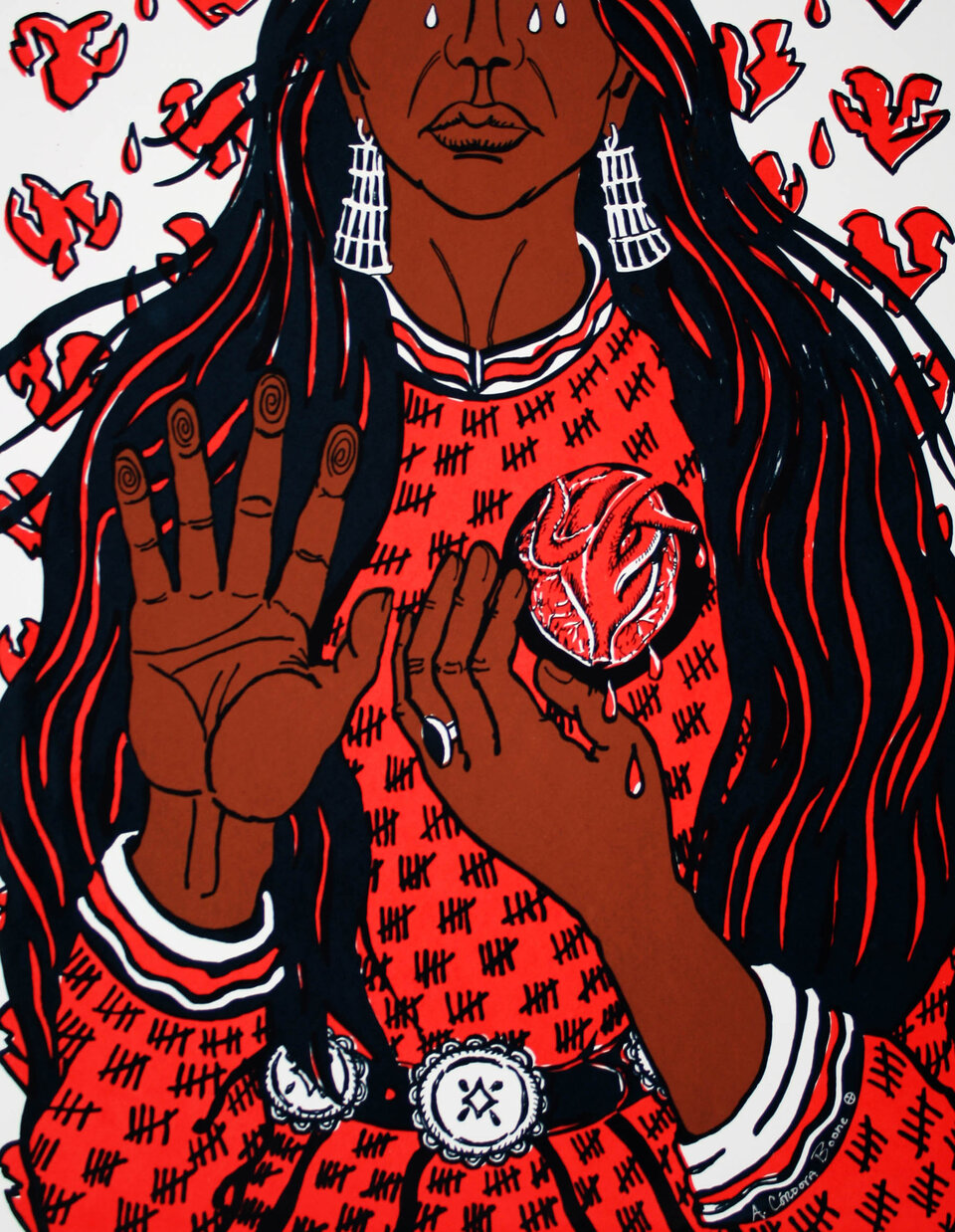
Amy Córdova Boone (Oaxaca, Mexico), How Many Broken Hearts?, 2020, screen print, 19 x 15 inches, image courtesy of the artist
Supporting Indigenous Sisters: An International Print Exchange
July 25–December 16, 2023
First floor, West Gallery
Supporting Indigenous Sisters is a print portfolio exchange involving sixteen artists from both Indigenous and non-Indigenous backgrounds. The portfolio was created to help begin conversations on many levels about missing and murdered Indigenous women. Each artist was asked to reach into their own experiences as a female walking this earth. The images from all of the artists advocate for change and for voicing this dark present history. Artists were invited by Melanie Yazzie, head of printmaking at the University of Colorado Boulder, and Catherine Prose, professor of printmaking at Midwestern State University in Wichita Falls, Texas.
Participating artists:
Maile Andrade, Kilauea, Hawaii, USA
Amy Córdova Boone, Oaxaca, Mexico
Krysten Farrier, Wichita Falls, Texas, USA
Anna Hoover, Anchorage, Alaska, USA
Vicki Meek, Dallas, Texas, USA
Sylvia Montero, Denver, Colorado, USA
Dilara Miller, Boulder, Colorado, USA & Mersin, Turkey
Andi Newberry, Wichita Falls, Texas, USA
Morgan Page, Wichita Falls, Texas, USA
Sue Pearson, Whakatane, New Zealand
Catherine Prose, Wichita Falls, Texas, USA (project co-organizer)
Rebecca Ramos, Aptos, California, USA
Jaune Quick-to-See-Smith, Corrales, New Mexico, USA
Jordan Vigil, Denver, Colorado, USA
Lorena Williams, El Paso, Texas, USA
Melanie Yazzie, Boulder, Colorado, USA (project co-organizer)
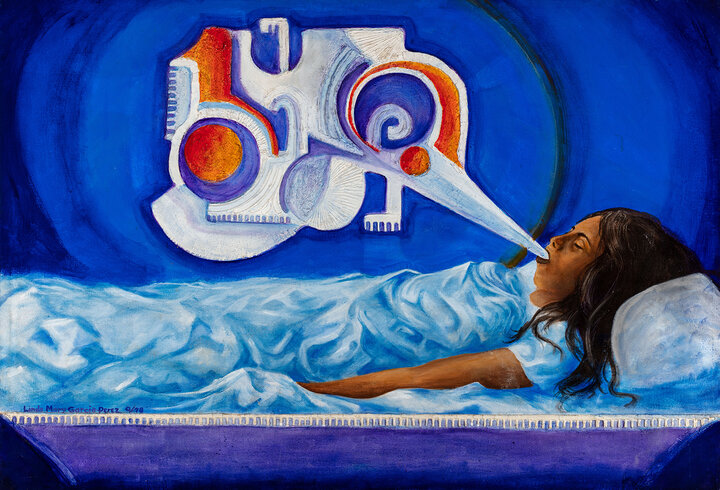
Linda Rivera García, When the Language Died, She also Died (Cuando Muriés la Lengua, Ella tambien Murió), 1978, acrylic, 36 x 48 inches, courtesy of the artist
Chicanisma: Elizabeth Rubendall Artist in Residence Linda Rivera García
March 24–September 22, 2023
The Great Plains Art Museum’s 2023 Elizabeth Rubendall Artist in Residence is Linda Rivera García, a Mexican-American Chicana artist, teacher, and storyteller who has been sharing her culture throughout Nebraska for decades. A graduate of Omaha’s College of Saint Mary and a retired children’s librarian, Rivera García is a multifaceted artist who works in painting, sculpture, printmaking, and with traditional Mexican art forms such as papel picado (cut paper) and repujado (metal embossing), among many others. This exhibition will feature work that represents the artist’s career to date.
Artist residency: April 4 to 15, 2023.
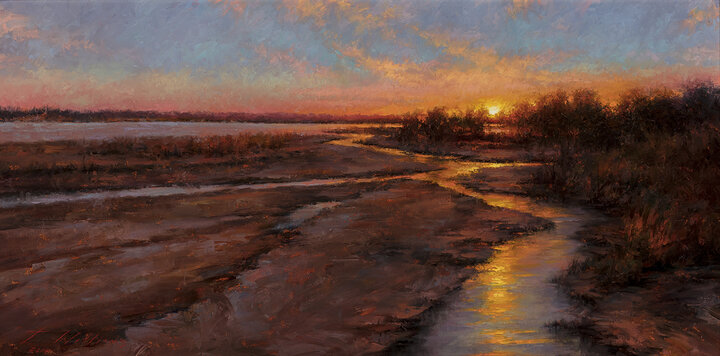
Todd A. Williams, Platte River, Hall County, Nebraska, 2014, oil on panel, commissioned for the Elizabeth Rubendall Artist-in-Residence Collection. © Todd A. Williams. Used by permission.
Water in a Dry Land
January 24–July 8, 2023
Water in a Dry Land considers our complex relationship with water and the many essential roles it plays in the Great Plains region. Utilizing artwork from the museum’s permanent collection, this exhibition features various cultural and artistic perspectives on the use of water, explores water management and agricultural practices, and addresses the effects of precipitation, drought, and flooding on the land.

Dana Fritz, Forest Edge, 2021, archival pigment print, courtesy of the artist.
Field Guide to a Hybrid Landscape
September 2, 2022–March 11, 2023
In Field Guide to a Hybrid Landscape, Dana Fritz’s photographs make visible the forces that shaped the Bessey Ranger District of the Nebraska National Forest and Grasslands, once the world’s largest hand-planted forest. Wind, water, planting, thinning, burning, decomposing, and sowing all contribute to its environmental history. A conifer forest was overlaid onto a semi-arid grassland just west of the 100th meridian in an ambitious late nineteenth-century idea to create a timber industry, and to change the local climate.
This unique experiment of row-crop trees that were protected from the natural cycle of fire for decades, yet never commercially harvested for timber, provides a rich metaphor for our current environmental predicaments. This late nineteenth-century effort to reclaim with trees what was called “The Great American Desert” has evolved to a focus on twenty-first-century conservation, grassland restoration, and reforestation, all of which work to sequester carbon, maintain natural ecosystem balance, and mitigate large-scale climate change.
Dana Fritz is Hixson-Lied Professor of Art at the University of Nebraska–Lincoln. She uses photography to investigate the ways we shape and represent the natural world in cultivated and constructed landscapes. She is the author of Terraria Gigantica: The World under Glass (University of New Mexico Press, 2017) and Field Guide to a Hybrid Landscape (forthcoming from University of Nebraska Press in January 2023).
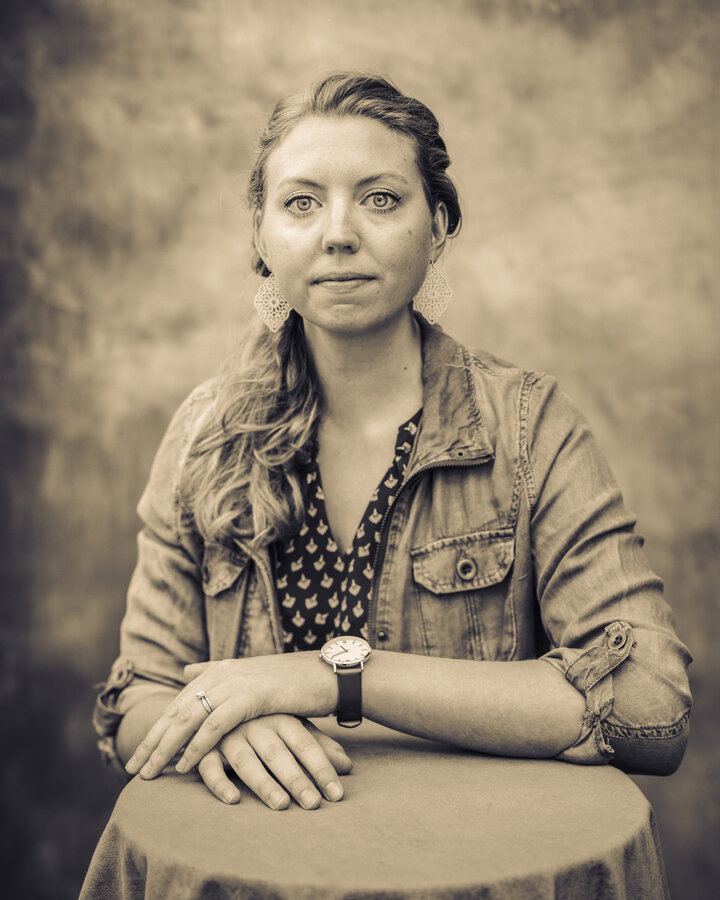
Michael Farrell, Rachel Prosser, 2020, archival inkjet print, courtesy of the artist
Wayfaring Strangers
September 2–December 17, 2022
"In the fall of 2020 after months of isolation due to the pandemic, I decided to create high quality large format portraits of people who, like me, hadn’t seen anyone socially in many months. The work was done in a backyard natural light alcove that I built, which harkened back to typical nineteenth-century portrait settings. I posted an invitation on Facebook hoping for a few takers. In the end 93 people participated. Most were enthusiastic about a safe distance visit and having a nice picture or two. But as we talked it became clear to me that there was a lot going on emotionally for all of us.
You won’t find many of those conversational details in the self-reported statements accompanying the images. But the content of those brief masked conversations is and was compelling. And the sharing of those intimate details is the biggest reward for the effort for me. Folks told me things that I wouldn’t pass on just like the priest is bound to silence of what passes across the screen of the confessional. I’m grateful for the trust and the shared stories.
And so together we made a ritual of making an image of these times written on these bodies and faces, “an outward and visible sign of inward and spiritual grace…” A sacrament in light struck silver."
—Michael Farrell
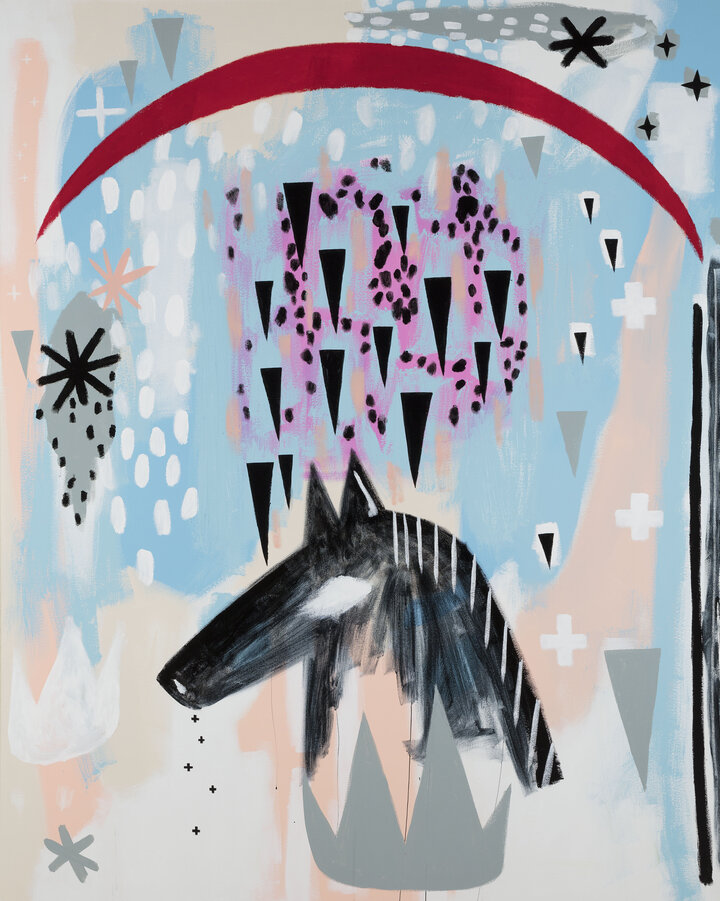
Sarah Rowe, The Song is Already There, 2022, mixed media on canvas, 60 x 48 inches, on loan courtesy of the artist
Star Body, Star Breath
March 4–August 6, 2022
Star Body, Star Breath features new and recent work by Sarah Rowe, the museum’s 2022 Elizabeth Rubendall Artist in Residence. Rowe is an Omaha-based multimedia artist of Lakota and Ponca descent whose work opens cross-cultural dialogues by utilizing methods of painting, casting, fiber arts, performance, and Native American ceremony in unconventional ways. Her work is participatory, a call to action, and re-imagines traditional Native American symbology to fit the narrative of today’s global landscape.
Visit the artist during her residency at the museum from April 5–16. Learn more about the residency and scheduled events here.
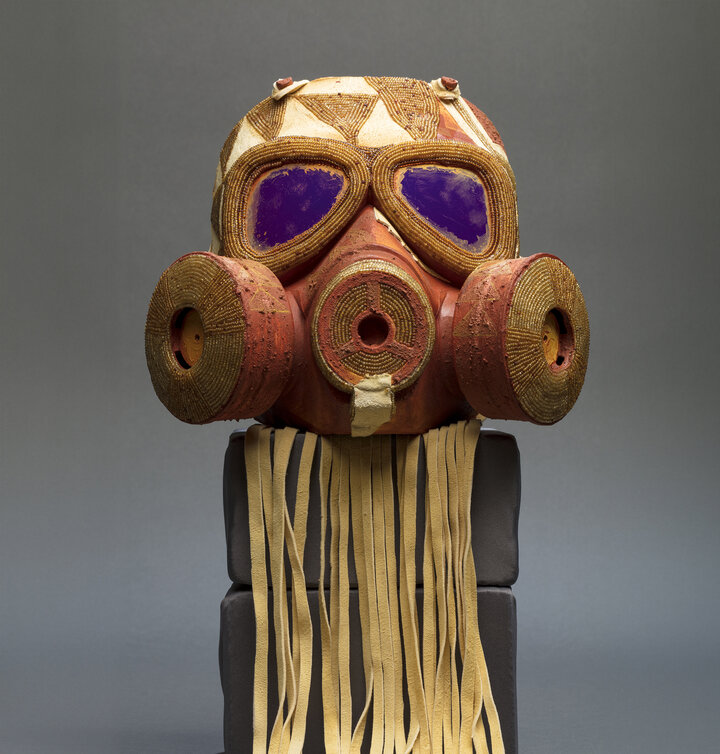
Mona Cliff, Gros Ventre (Aaniiih) tribe (enrolled), Assiniboine, Cayuse
Past/Presence/Future, 2020, gas mask, seedbeads, beeswax, leather, acrylic
Contemporary Indigeneity 2022
April 1–August 20, 2022
In 2022, the Great Plains Art Museum revived its biennial juried exhibition, Contemporary Indigeneity. The fourth iteration of this group show featured artists addressing themes relevant to the contemporary Native American experience on the Great Plains, with the goal of highlighting current Native artistic practice and the diverse media and content explored by these artists.
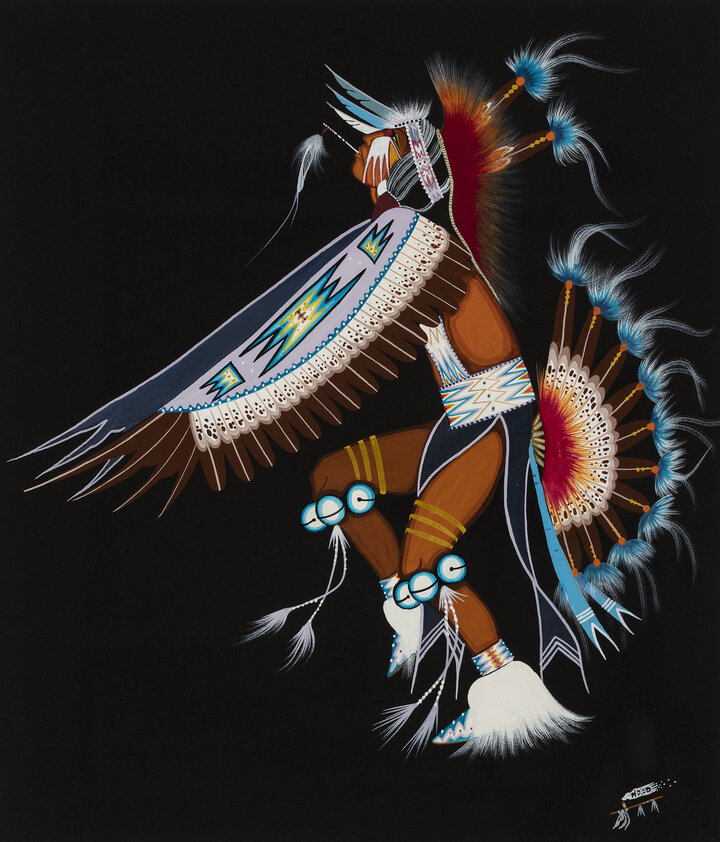
Rance Hood (Comanche, b. 1941, Lawton, OK), Eagle Dancer, circa 1969, gouache on paper, gift of Gayle Loeber
A Vital Presence: Native Art at the Great Plains Art Museum
November 5, 2021–March 19, 2022
A Vital Presence presents selections from the Great Plains Art Museum’s collection of Native art, a significant—and growing—part of its permanent holdings. Featuring artists from diverse Great Plains and Southwest Indigenous tribes, this exhibition highlights the perspectives of these artists while emphasizing the ongoing presence and vitality of Indigenous peoples in our region.

William de la Montagne Cary (1840–1922)
Buffalo Throwing the Hunter
1909, bronze, gift of Dr. John and Elizabeth Christlieb
The Christlieb Collection: 40 Years Later
October 1, 2021–February 19, 2022
In the fall of 1981, the Christlieb Collection of Western Art opened to the public on the second floor of UNL’s Love Library. 40 years later, this collection is still a favorite of many who visit it in its current home at the Great Plains Art Museum. This exhibition highlights key pieces from the collection and explores the legacy and interpretation of these artworks and the American West.
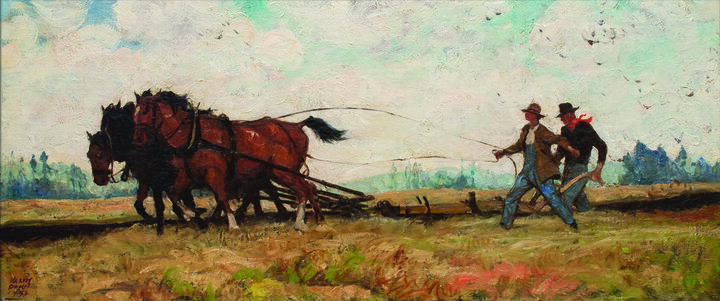
Harvey Dunn (1884–1925)
Sons of the Frontier
circa 1940, oil on canvas
Courtesy of the Mark and Carol Moseman Collection of Agrarian Art
Agrarian Spirit in the Homestead Era: Artwork from the Moseman Collection of Agrarian Art
July 2–October 23, 2021
Agrarian Spirit in the Homestead Era features sixty paintings, sculptures, and prints that reveal dramatic change in land use on the Great Plains, from European American settlement and homesteading in the 1860s to an exodus from the land in the 1930s.
Jean-Francois Millet’s The Sower shows the dawn of this golden age of agrarian life, while artists such as Eastman Johnson, Winslow Homer, Georges Laugée, Thérèse Cotard-Dupre, John Gutzon Borglum, Harvey Dunn, Diego Rivera, and Robert Gwathmey represent the settlement of the Plains. Artworks by John Steuart Curry and Georges Schreiber show uncertainty near the end of the Homestead era and the twilight of this brief but transformative time in American history.
The exhibition travels to the Great Plains Art Museum from the Albrecht-Kemper Museum of Art in St. Joseph, MO, and is accompanied by an illustrated catalogue published by the Albrecht-Kemper and edited by Mark and Carol Moseman. This Homestead-era art is a planned gift to be added to the Mark and Carol Moseman Collection of Agrarian Art, a named GPAM collection of annual artwork gifts that began in 2002.
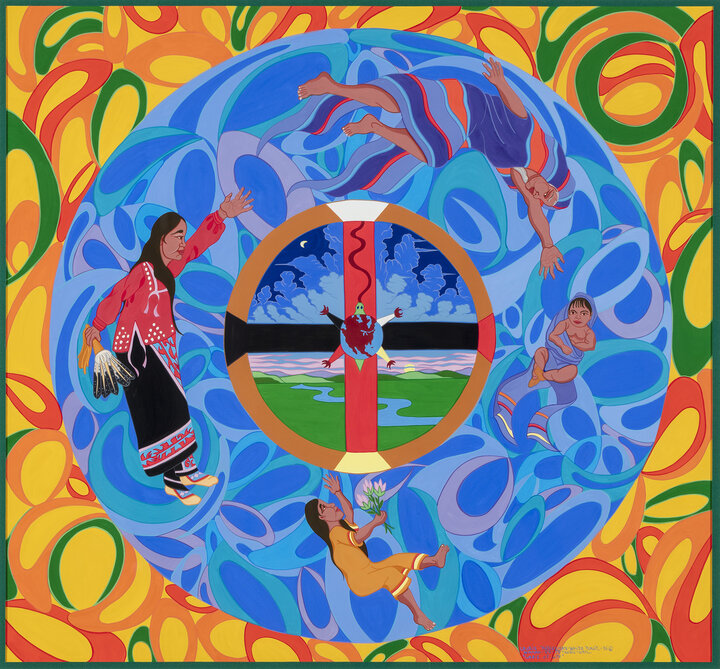
Laurie Houseman-Whitehawk, Ho-Chunk (Winnebago) Tribe of Nebraska/Santee Sioux
Circle of Life, 1995, gouache on paper
Purchased through the generosity of the Friends of the Center for Great Plains Studies
Woman As…Exploring Gender and Representation in the Permanent Collection
May 25–September 18, 2021
Art is often reliant on perception and perspective: how something is portrayed and how we as the viewer respond to it. Through this exhibition, Graduate Research Assistant Hannah Ashburn investigates how women are seen and represented in artwork from the Great Plains Art Museum’s permanent collection. Arranged in a series of vignettes, Woman As… focuses on the depiction of women in various contexts, framing them as worker, bearers of culture, sources of life, and much more. The selected artworks were produced both by artists who identify as women and by those that do not to highlight different perspectives and understandings.
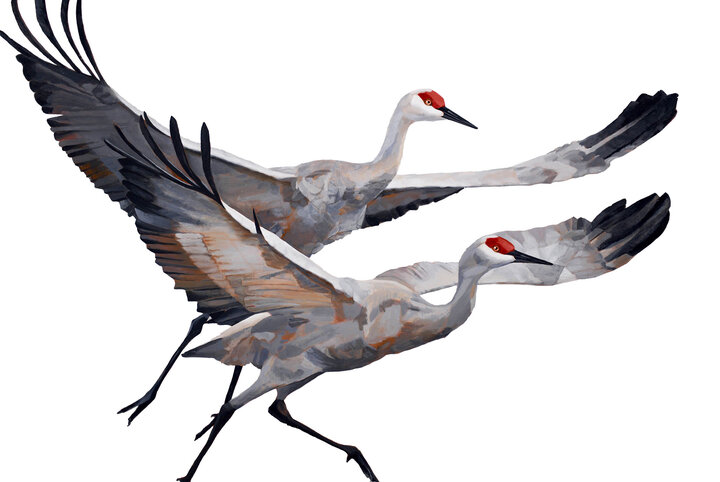
Jude Martindale
Synchronicity, 2018, acrylic on canvas, 48 x 72 inches
Image courtesy of the artist
The Great Migration: A Celebration of Sandhill Cranes in Nebraska
January 19–June 19, 2021
Cranes have claimed a special place in people’s hearts for millennia. They are found in petroglyphs in Utah, in texts from ancient Greece and Rome, and they have long been revered as symbols of happiness and longevity in Asia. In March and April, Nebraska is a stopover place for about a million Sandhill Cranes, mostly along the central Platte River. It is the largest gathering of cranes in the world and one of the most popular of all wildlife migrations. Thousands of people visit Nebraska to see these birds and to reconnect with nature.
This exhibition celebrates this annual wildlife spectacle and the unique lives of these elegant birds. The artist, Jude Martindale, interprets her experiences with the cranes in ways that reveal not only their personalities, but also her emotional reactions to watching their captivating behaviors.
Video: A Crane Conversation with Jude Martindale and Jason “the Birdnerd” St. Sauver
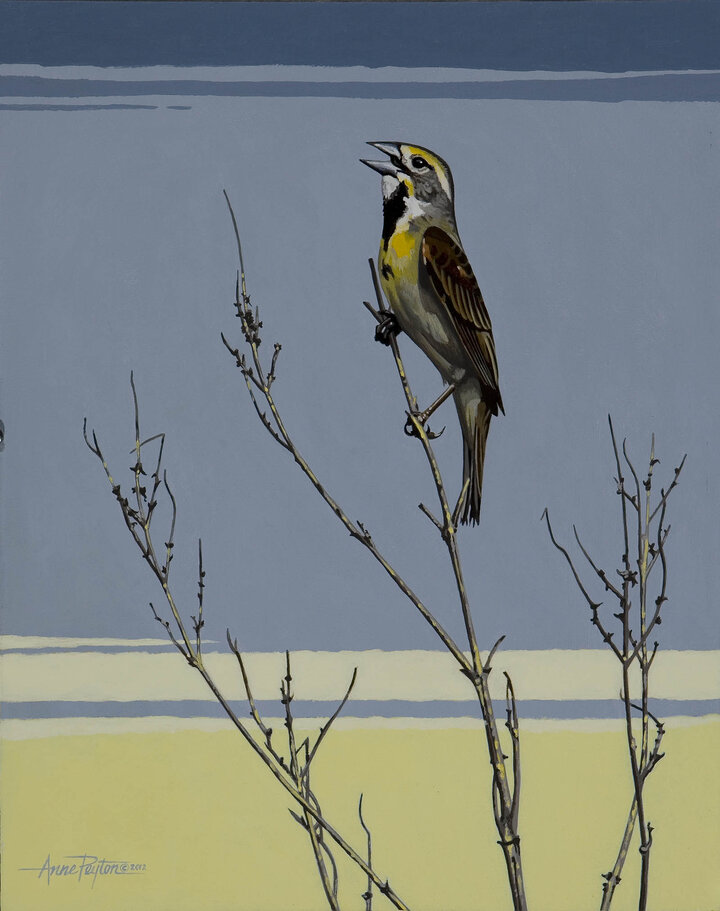
Anne Peyton
Top of the Morning, 2012, acrylic on panel
Commissioned for the Elizabeth Rubendall Artist-in-Residence Collection
© Anne Peyton. Courtesy of the Artist
Avian Observations: Great Plains Birds in Art
January 19–May 8, 2021
Avian Observations highlights artistic representations of the varied species of birds on the Great Plains. Featuring artwork from the museum’s permanent collection and from Elizabeth Rubendall Artist in Residence Kirsten Furlong, this exhibition allows us to explore the history, physical characteristics, behaviors, habitats, and conservation of the diverse creatures that are so important to the Great Plains region.
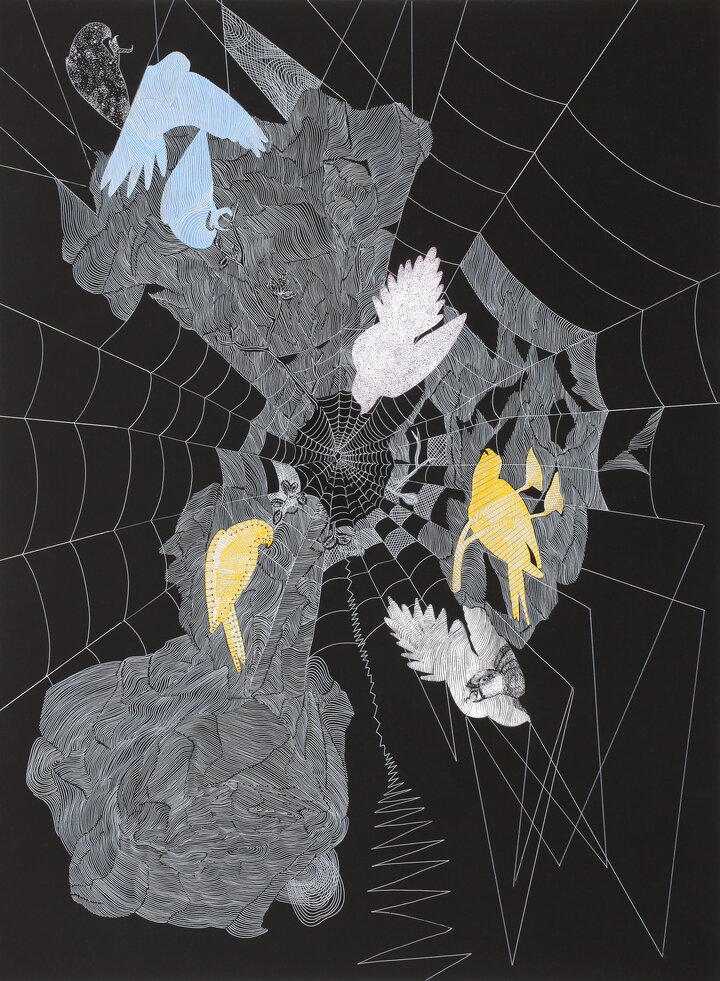
Kirsten Furlong
Extinct Birds of the Great Plains: Carolina Parakeet (Conuropsis carolinensis ludovicianus), 2019, ink, collage, colored pencil, and acrylic on paper
photograph courtesy of the artist
Over the Edge of the World—Kirsten Furlong: Elizabeth Rubendall Artist in Residence
March 6–November 21, 2020
The exhibition Over the Edge of the World by Kirsten Furlong explores the artist's interpretation of the natural history and current grassland ecology in the Great Plains and beyond through drawings, monotypes, and paintings. Bird species, past and present, insects, animals, and plants are depicted along with mark making inspired by the lines and textures of the prairie.
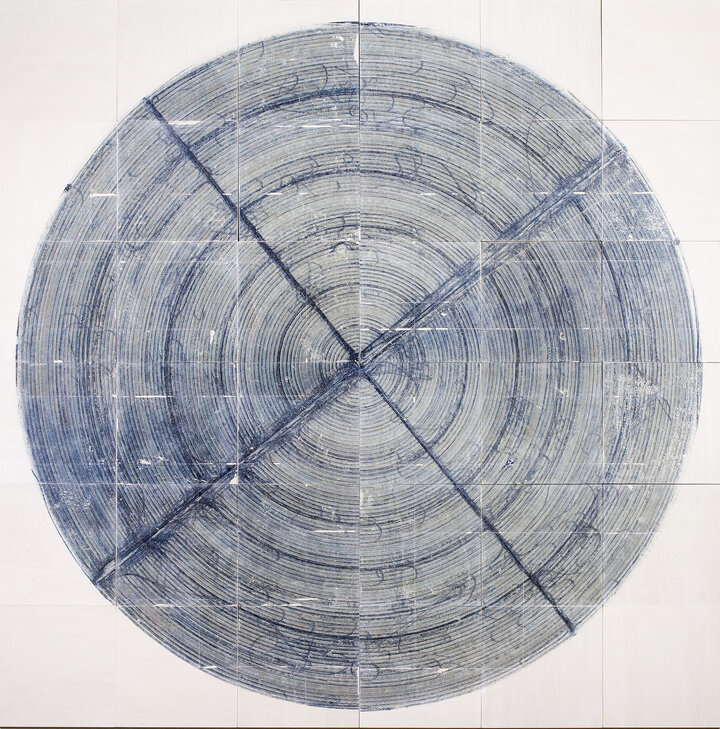
Kendall McMinimy
Aggrandizement 1, 2016, acrylic and toner on birch panel, Museum purchase
Another Perspective: Interpretations of the Landscape
September 4–December 19, 2020
The wide, open skies and expansive prairies of the Great Plains inspire many artists to create varied interpretations of the natural world. Another Perspective features artists from the permanent collection who approach this subject matter from a unique vantage point and use abstract mark making, unconventional materials, and inventive compositions to depict the landscape.
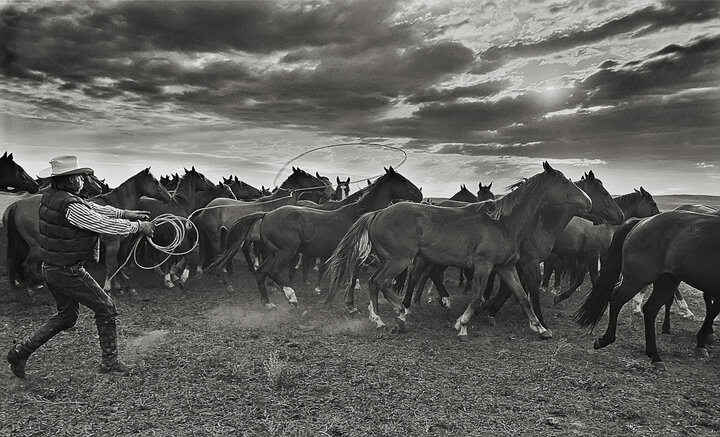
Charles W. Guildner
Morning Mounts, 2002, gelatin silver print
courtesy of the artist
Retrospective of Life’s Work: Charles W. Guildner
January 21–August 22, 2020
In 1990, Charles Guildner set out to photograph the landscape and people of the rural heartland. In the years since, Guildner has expertly recorded how the people of this region have maintained their traditional ways of life. This exhibition—a retrospective of Guildner’s 30-year photographic career—features examples from his Lives of Tradition series and from other projects.
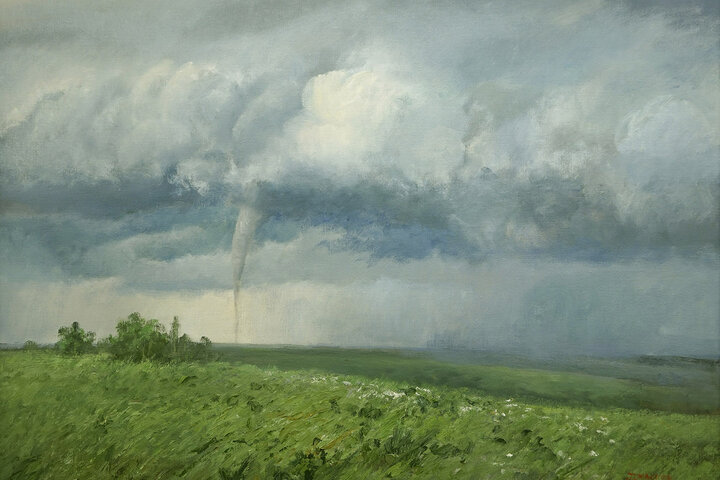
Judith Mackey
Wings of Ezekiel, 2002, oil on canvas
gift of the Mark and Carol Moseman Collection of Agrarian Art
Up in the Air: Great Plains Weather
January 21–August 22, 2020
This exhibition explores how artists have chosen to depict the ever-changing weather on the Great Plains. These images of snow-covered landscapes, tumultuous storms, and cloud-filled skies contribute to our understanding of how dynamic weather events affect the landscape and people of the region.
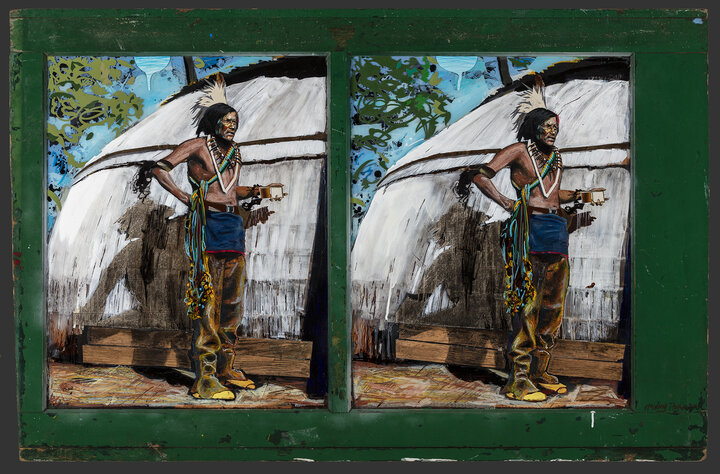
Henry Payer
Grey Wolf, mixed media, 25 ½ x 39 inches
commissioned for the Elizabeth Rubendall Artist-in-Residence Collection
Recent Acquisitions: Highlights from the Great Plains Art Museum Permanent Collection
November 1, 2019–February 22, 2020
This exhibition highlights the generosity of the museum’s donors by featuring artwork that has entered the permanent collection in recent years.
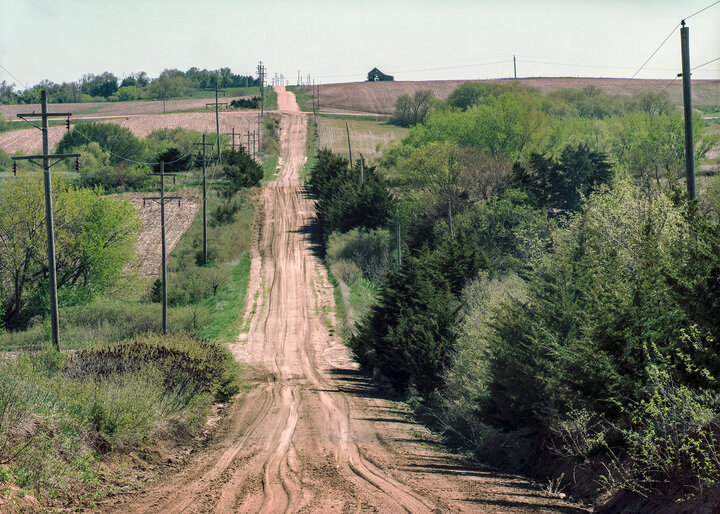
Photo by Michael Farrell
In the Bohemian Alps: Photographs by Michael Farrell
September 6–December 21, 2019
The “Bohemian Alps” is a region of rolling loess hills that sits like an overturned bowl on the tabletop of eastern Nebraska between the Platte River to the north and Lincoln to the south, David City to the west and Wahoo to the east. In the early spring of 2017, I began visiting the region every few weeks to photograph in color using large format film cameras. As in my previous rural Nebraska photographic explorations, I’m drawn to the many small streams, old steel bridges, dilapidated farm buildings, minimum maintenance roads, and out of the way places—and how the light, colors, and textures on the land evolve with the changing of the seasons. A visitor driving the gravel roads will notice the many Czech names on the mailboxes and on the gravestones in the rural community cemeteries, and thus become aware of the continuity of family landowners and the care they have bestowed on the land during the 140 years since it was settled by their immigrant ancestors.
—Michael Farrell
Opening reception: First Friday, Sept. 6, 5-7 p.m., artist talk at 6 p.m.
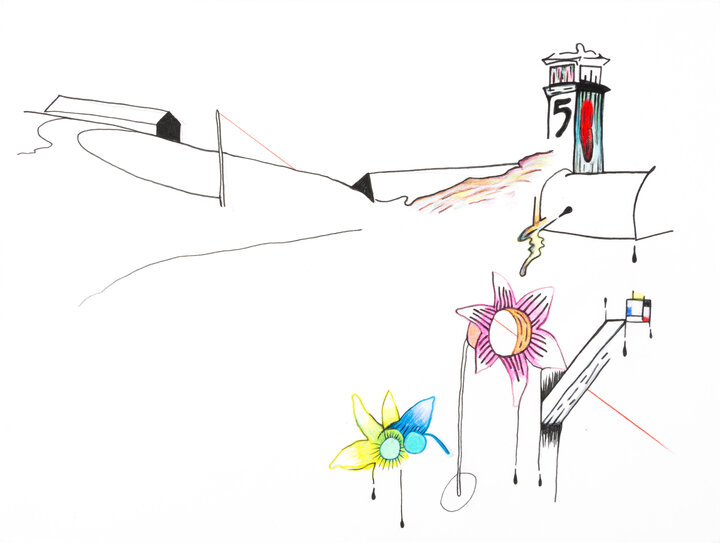
Hills Snyder
Recluse, WY 11, 2017, pencil on paper, 10 ½ x 13 ½ inches
on loan courtesy of the artist
Hills Snyder: Altered States (Part Five)
July 19–October 19, 2019
Altered States (Part Five) is part of an ongoing series of interconnected exhibitions consisting of several dozen drawings based on travels to Nowhere, Oklahoma; Happy, Texas; Lost Springs, Wyoming; Keystone, South Dakota; Recluse, Wyoming; Opportunity, Montana; Funk, Nebraska, and points in between. A narrative written by the artist will appear in the online magazine Glasstire in conjunction with each exhibition.
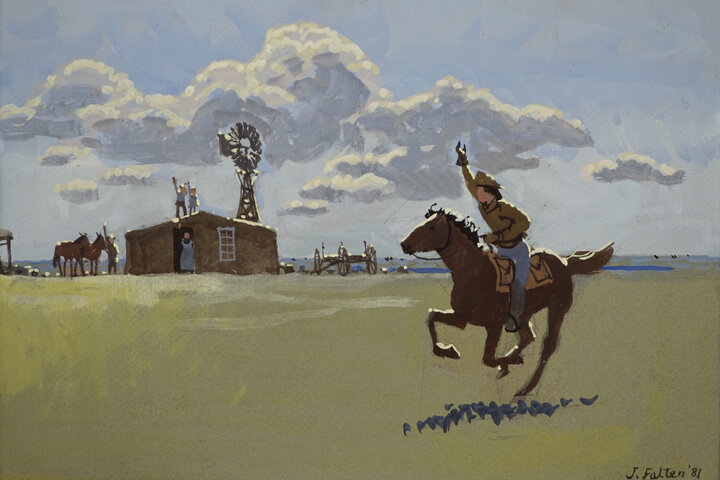
John Falter
Untitled (Pony Express Rider), 1981, watercolor on paper
Purchased with funds from the Dr. John and Elizabeth Christlieb Endowment
American West Masters
April 23 – August 24, 2019
This exhibition features works from the permanent collection by artists who were key players in picturing the American West. Albert Bierstadt, Ernest Berke, Karl Bodmer, Fremont Ellis, William Henry Jackson, Carl Kauba, Fredric Remington, Charles M. Russell, Olaf Wieghorst, and many others will be included.
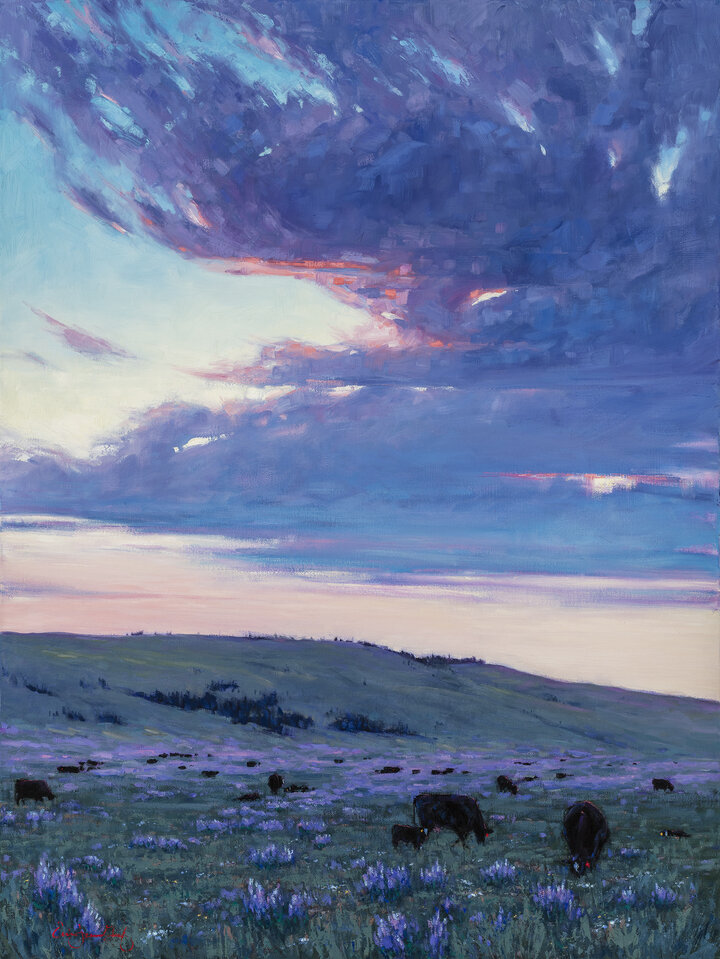
Artwork: Erin Jones Graf, b. 1982, Bozeman, MT
Among the Purple Lupine, 2019, oil on canvas
Commissioned for the Elizabeth Rubendall Artist-in-Residence Collection
Montana: Prairies to Peaks: Elizabeth Rubendall Artist in Residence Erin Jones Graf
March 1–June 29, 2019
Residency dates: March 23–April 6, 2019
Erin Jones Graf graduated from Montana State University in 2006 with a Bachelor of Fine Arts in Printmaking and a separate degree in K-12 Art Education. While she is drawn to the manual labor of printmaking and the “chemistry” behind the process, her love has always been painting. The artist’s native Montana is the subject of her exhibition as the 2019 Elizabeth Rubendall Artist in Residence. She states: “I grew up on the edge of the great plains of Montana, on land that nourished four generations of my family before me…. I paint my home, and my home is expansive. From prairies to peaks, I move along the hay fields and hills, painting the grandeur that is Montana.”
Jones Graf is the inaugural artist for the Elizabeth Rubendall Artist-in-Residence Studio and Education Lab donated by Fred and Julie Hoppe, which will open in spring 2019.
Tonita Peña, San Ildefonso Buffalo Dancers, n.d., gouache on paper, gift of Patricia Janis Broder and Stanley H. Broder
From Paint Brushes to Camera Lenses: Creative Women of the Great Plains
September 7, 2018 – April 6, 2019
Paintings, sculptures, drawings, and photographs from the permanent collection highlight the creative spirit of women artists. Jaune Quick-to-See Smith, Tonita Peña, Terry Evans, Hulleah J. Tsinhnahjinnie, Martha Pettigrew, and Anne Burkholder are just a few of the artists featured.
Opening reception: September 7, 5-7 p.m.
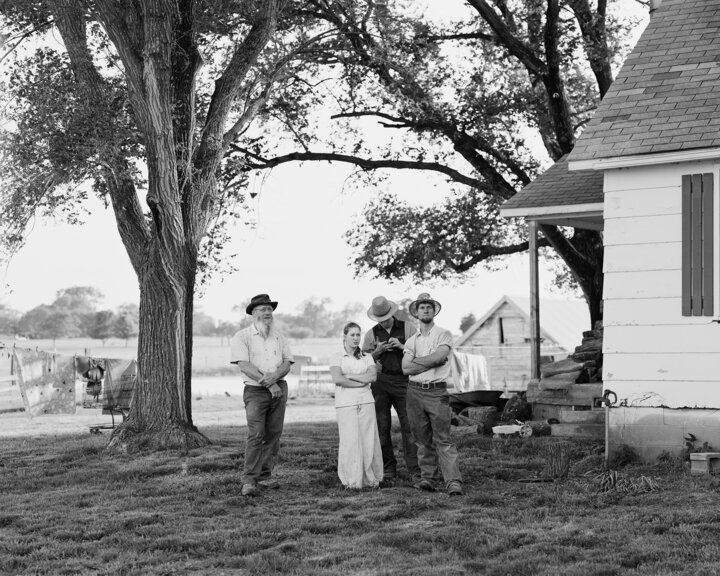
New Farmers photo
New Farmers
November 2, 2018 – February 16, 2019
New Farmers is a collaborative research project between photographer D. Bryon Darby, designer Tim Hossler, and sociologist Paul Stock. An observation of today's independent farmer, the project merges visual images with the print media of newspapers to explore and discuss contemporary farming. New Farmers aims to tell the story and empower the diversity of a new breed of first-generation, small-scale, sustainable farmer. Large-scale prints from the project pair with text that tells the story of these farmers. Visitors can take a copy of the “New Farmers” newspaper at the exhibition, which addresses the subjects of the work, food and farming on the Great Plains. More about the project can be found at http://www.newfarmersproject.com/
This program is brought to you by Humanities Nebraska, a statewide, non-profit organization inspiring and enriching personal and public life by offering opportunities to thoughtfully engage with history and culture, with additional funding from the Nebraska Cultural Endowment.
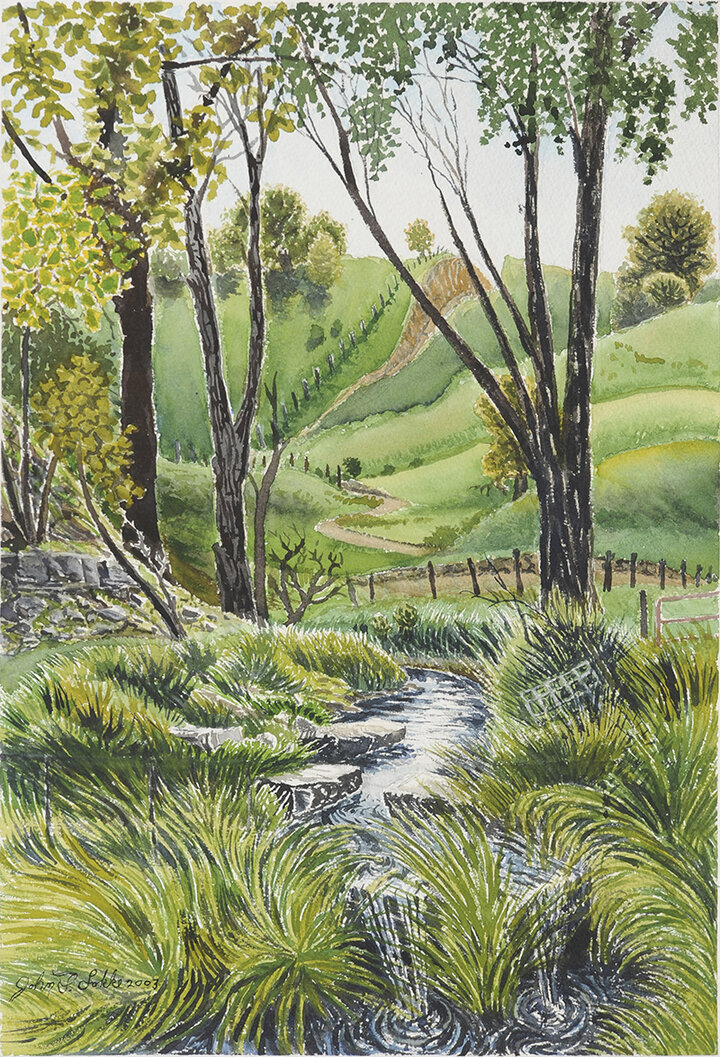
John Federick Lokke, A Relic at the End of the Road, watercolor on paper, courtesy of the artist
Art & Poetry of the Barada Hills
July 13 – October 20, 2018
Watercolor paintings by John Frederick Lokke paired with poems by Jan Chism Wright tell a story about the rolling hills of southeast Nebraska through images and words.
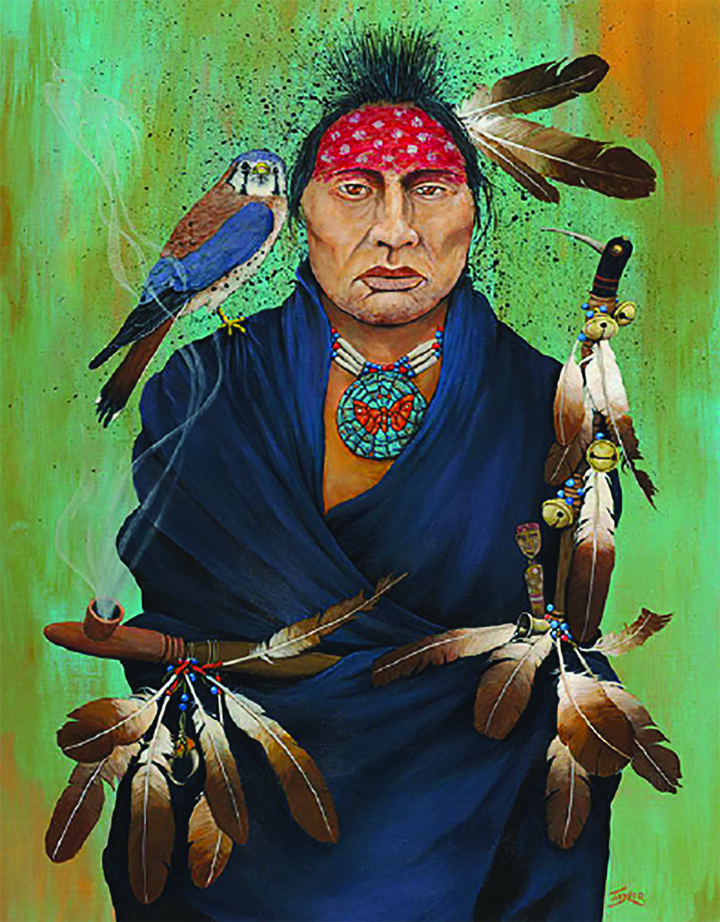
Robert Taylor, Becoming, 2015, acrylic on canvas, courtesy of the artist
Robert Lee Taylor
May 4 – August 25, 2018
The Oklahoma artist was named the Distinguished Visiting Artist at the Fred Jones Jr. Museum of Art at the University of Oklahoma, Norman in fall 2017. A portion of the artist's new work will travel to Nebraska. A self-taught artist of Native descent, Taylor is best known for his usage of iconic symbols and manipulation of proportion seen often in the hands and feet. His symbolic paintings challenge the notion that American Indian art should adhere to any one style.
With the support of Humanities Nebraska and the Nebraska Arts Council and the Nebraska Cultural Endowment.
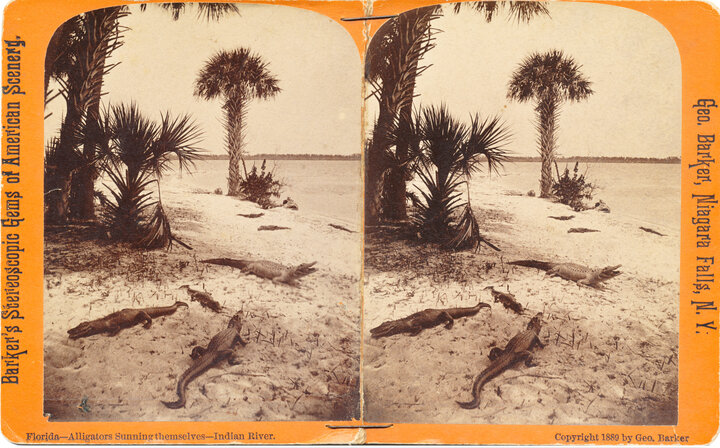
George Barker, Florida-Alligators Sunning Themselves-Indian River, stereoview
Collection Critters
November 3, 2017 – February 1, 2018
All types of Great Plains animals from bison to horses to cranes to dogs will appear in sculpture, prints, photographs, and paintings from the Museum’s permanent collection.
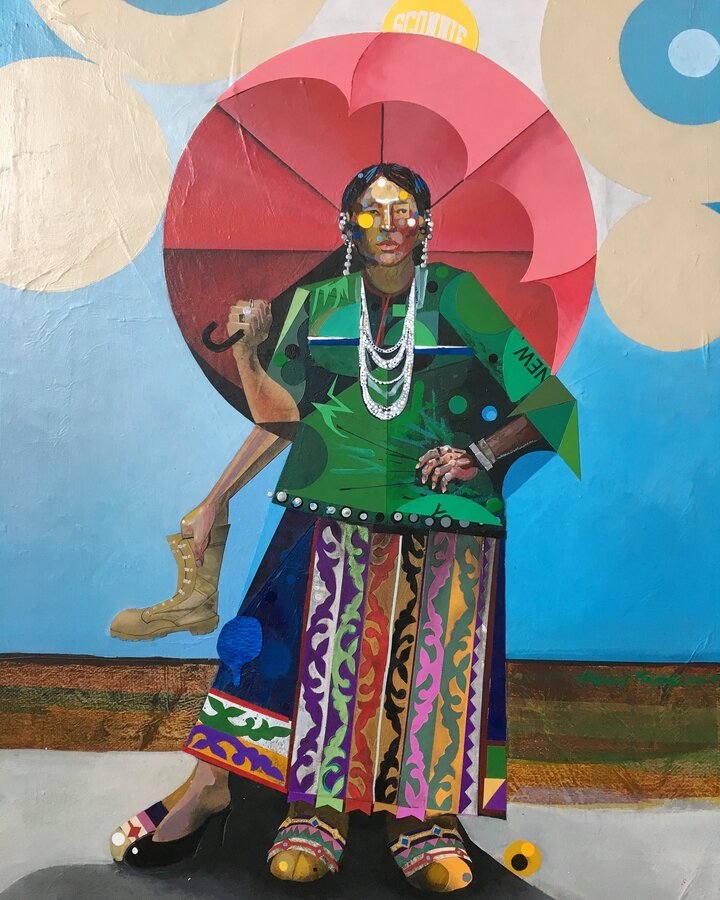
Her Mother Wore Army Boots, 2017; courtesy of the artist
Elizabeth Rubendall Artist in Residence: Henry Payer
March 2 – June 30, 2018
Henry Payer is a Ho-Chunk multidisciplinary artist who works primarily with collage and mixed media. He references the altered landscape through Indigenous cartographic methods of "picture-writing" with traditional aspects of spatial representation and symbolism combined with European modernist models of cubism, spatial distortion and collage. Henry represents a new generation of artists seeking to expand the range and voice of their visual and cultural representation, while attending to forms of tradition.

Olaf Seltzer
Charles M. Russell on Redbird, ca. 1905-1907, oil on canvas mounted on panel
Gift of Dr. John and Elizabeth Christlieb
Cowboys from the Collection
January 16 – April 28, 2018
Explore how this icon of American culture has been depicted over the last century through artworks selected from the permanent collection. Of note will be bronzes from renowned cowboy artists Charles M. Russell and Frederic Remington, paintings by Jackson Pollock, Thomas Hart Benton, and Olaf Wieghorst, and contemporary photography by Chuck Guilder and George Tuck. With the support of the Nebraska Arts Council and the Nebraska Cultural Endowment and Humanities Nebraska.
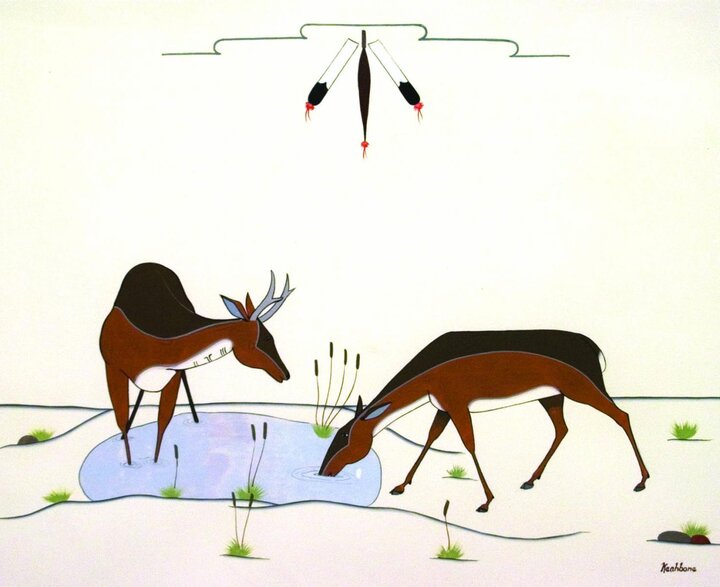
George Barker, Florida-Alligators Sunning Themselves-Indian River, stereoview
Collection Critters
November 3, 2017 – February 1, 2018
All types of Great Plains animals from bison to horses to cranes to dogs will appear in sculpture, prints, photographs, and paintings from the Museum’s permanent collection.
Collecting Nebraska
August 4 – December 16, 2017
Features artworks from the permanent collection that depict Nebraska or were created by Nebraska artists. The exhibition is an official event of 150th Anniversary celebration of Nebraska statehood.
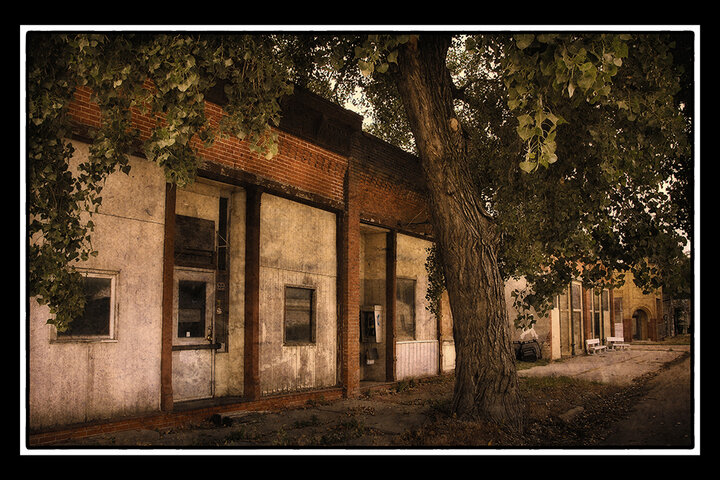
Rick Houchin
Main Street, Ong, August 3, 2011
Presence of Absence
July 7 – October 28, 2017
Photographs by David Lovekin and Rick Houchin depicts several small towns in central Nebraska. The pair of photographers spent two years traveling throughout Nebraska capturing quiet streets and signs of humanity, but void of inhabitants.
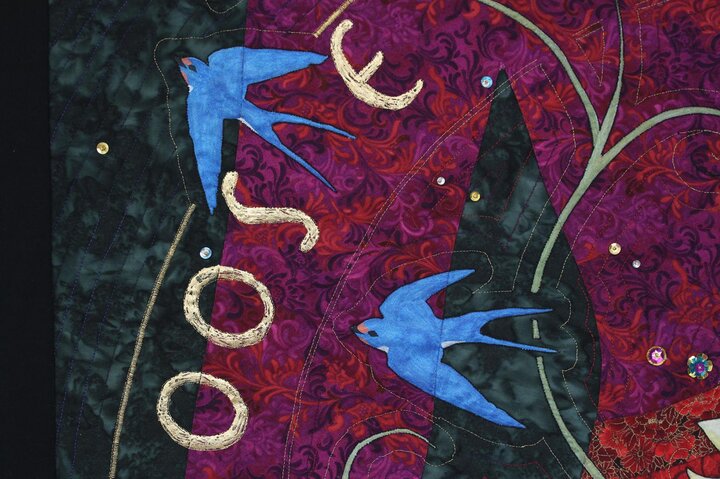
Cynthia Wenslow
July 9th - Lake County Series, 2015
fabric, felt, thread
Deeply Rooted
April 7 – July 15, 2017
A traveling exhibition that features narrative quilts by Studio Art Quilt Associates from Illinois, Iowa, Nebraska and Wisconsin. The imagery explores the connection of family, community, and our spirituality to nature and the Midwest soil. These aspects can be interpreted in abstract or concrete ways.
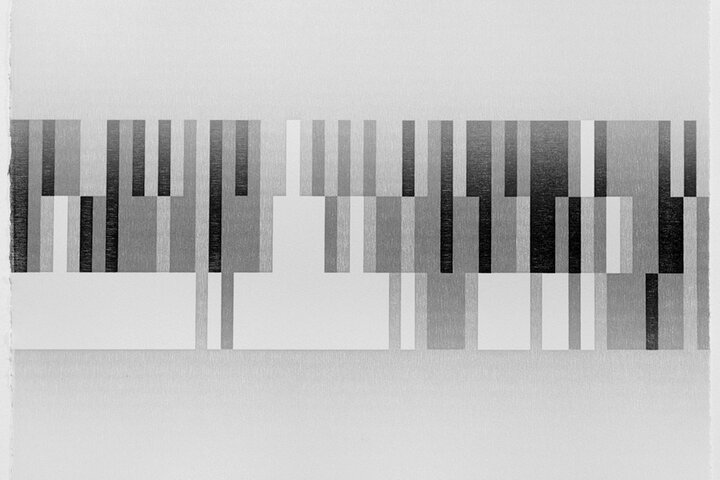
Lari R. Gibbons
Lari R. Gibbons: Rising
March 3 – June 24, 2017
Lari Radabaugh Gibbons is a professor at the University of North Texas, where she teaches printmaking and directs the Print Research Institute of North Texas (P.R.I.N.T Press). She earned an MFA from the University of Nebraska and a BA from Grinnell College (Grinnell, Iowa). Lari served as editor of The Mid America Print Council Journal from 2010 to 2013. Gibbons was selected because her work relates to the CGPS 2017 Symposium “Flat Places, Deep Identities: Mapping Nebraska and the Great Plains” and she is a UNL alumna, connecting to the 150-year celebration of Nebraska statehood.
Paul Johnsgard
Common Merganser (Mergus merganser)
ink on paper
Paul Johnsgard: Hand-Tinted Prints from the Permanent Collection
January 6 – March 25, 2017
Selection of hand-tinted prints of biological drawings of flora and fauna of the Great Plains by UNL Professor Emeritus Paul Johnsgard.
Love Long Ago (Butler County)
Caryl Bohn, photo
Bridges: Sharing Our Past to Enrich the Future
Hildegard Center for the Arts 150th Photo Exhibition
January 6, 2017 – March 25, 2017
In collaboration with the Hildegard Center for the Arts, the Great Plains Art Museum will host the statewide traveling photography exhibition, "Bridges: Sharing Our Past to Enrich the Future," as part of Nebraska's 150th Sesquicentennial. This juried exhibition will serve as a bridge to connect Nebraskans with their culture and heritage highlighting historic places and often over-looked historical treasures in all 93 counties. The Governor’s Sesquicentennial Committee (the Nebraska 150 Commission) has officially endorsed this project as a Signature event.
Terence Talaswaima
Soyoko Ogres, 1977, acrylic on paper
Glimpses of the Southwest
Native American Art from the Permanent Collection & the University of Nebraska State Museum
November 4, 2016 – February 25, 2017
Paintings and sculptures by Southwest Native American artists provide a glimpse of a region bordering the Great Plains. Paintings from the artistic collaboration known as Artist Hopid from the Great Plains Art Museum’s permanent collection are featured alongside objects on loan from the University of Nebraska State Museum including pottery from the Norman and Bernice Harris Collection and kachinas from bequest of Luella Buros. This exhibition provides a unique opportunity to view rarely seen jewels from the University of Nebraska State Museum in conjunction with paintings by Hopi and Zuni artists from the same region of the American Southwest.
Contemporary Indigeneity: Spiritual Borderlands
September 2 – December 17, 2016
The 2016 iteration of Contemporary Indigeneity at the Great Plains Art Museum at the University of Nebraska-Lincoln will explore Native American spirituality through artistic interpretations of place in the Great Plains. By bringing together works incorporating a diverse range of artistic media, this exhibition will seek to create dialogues regarding interpretations of sovereignty, spiritual connections to the land, and cultural identity within the boundaries of the Great Plains.
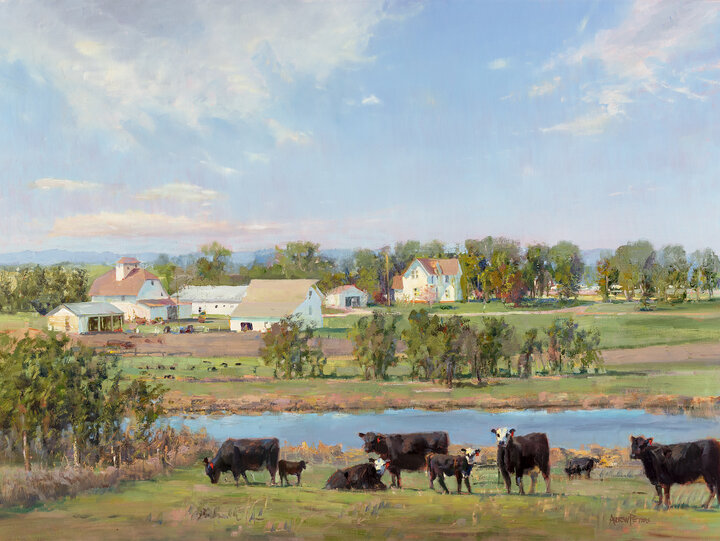
Andrew Peters
A Good Solid Century Farm, 2006
oil on canvas
Ten Years of Elizabeth Rubendall Artists in Residence
September 2 – December 17, 2016
The Elizabeth Rubendall Foundation has generously funded the artist-in-residence program at the Great Plains Art Museum since 2006. While in residence, an artist creates a work on-site affording visitors a unique opportunity to see the artmaking process and meet the artist. The artwork then becomes part of the Museum's permanent collection. There are no limitations in regards to style or media; the only criteria is that the artist(s) hail from the Great Plains and/or depict subjects pertinent to the region.
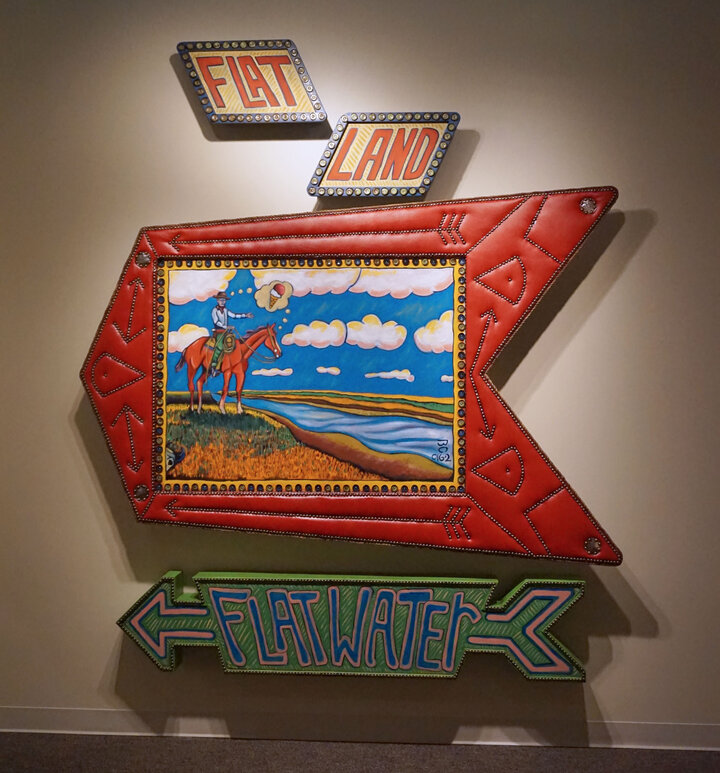
B.C. Gilbert Flat Land, Flat Water, 2015
mixed media
Flat Land, Flat Water: Rubendall Artist in Residence B.C. Gilbert
July 12 - October 29, 2016
B.C. Gilbert's work is influenced by experiences of growing up on the High Plains of Texas where ranching is prominent. His work brings into question the iconography of West Texas incorporating cowboys and Indians alongside landscape markers such as water towers. In multi-media constructions that merge unconventional materials such as tooled leather, metal siding, and found objects with painting, Gilbert depicts the West in a manner reminiscent of Pop artists. Most recently, Gilbert began making prints combining Western icons with text. Gilbert’s sculptural paintings and prints present a unique perspective of the contemporary American West.
Gilbert was in residence at the Museum from August 2 - 6 and October 11-15.
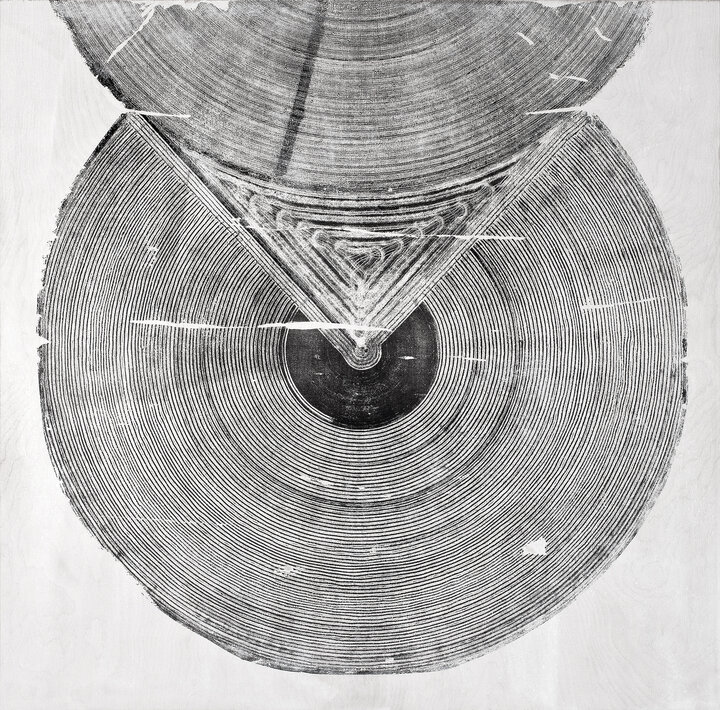
Kendall McMinimy, Pivitol
Cropping to Circles by Kendall McMinimy
June 3 - August 27, 2016
Kendall McMinimy fuses photography and printmaking in monochromatic abstracted renderings of irrigation systems. The artist draws attention to agricultural water use through images that explore the nature of center pivot irrigation as “a system that encircles multiple conflicting truths — a worldwide revolution in food production is also complicit in the depletion of groundwater; humanitarian aid aligns with hegemonic order; global market forces allow and deny local economies; a system simultaneously produces and diminishes.”
Born and raised in the High Plains of Kansas, McMinimy holds an MA and MFA from the University of Wisconsin, Madison. Cropping to Circles was recently recognized in the Critical Mass Top 50 Portfolios of 2014.
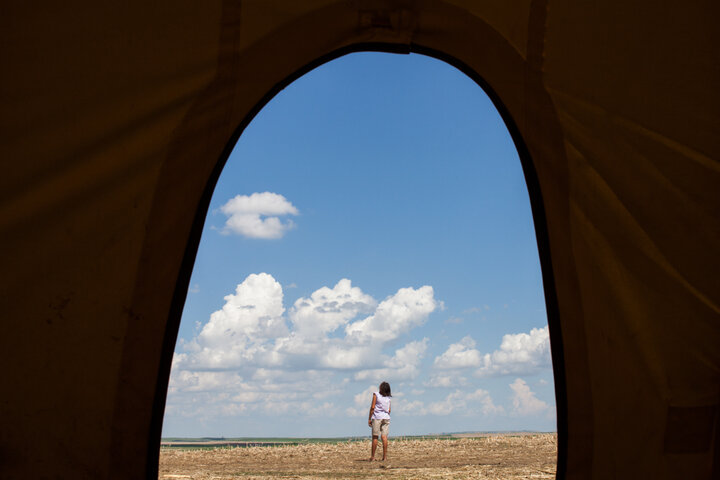
Kate Schneider
We, the Heartland
April 1 - August 27, 2016
We, The Heartland is a love letter to the cultural landscape of the prairies. Photographs by Kate Schneider portraying the proposed Keystone XL pipeline route in Nebraska and South Dakota are paired with handwritten letters to President Obama from landowners and Lakota natives. The landscapes address the unseen threat the proposed pipeline poses to the land, and the accompanying letters address the indexical relationship between the land and those who seek to preserve it.
Schneider is a Toronto-based photographer and educator. Her work is based in the traditions of documentary storytelling and ethnography, and her most recent works focus on the impact that land and the socialized landscape have on individual and cultural identity in North America. Schneider was recognized by the Magenta Foundation's 2013 and 2015 Flash Forward competitions, and has recently shown her work at the Soho Photo gallery (New York), the Society of Photographic Education (Cleveland), and the floor of the United States Senate. She received her MFA in Documentary Media from Ryerson University (2009) and is an Instructor of Photography at OCAD University and the University of Guelph-Humber. This exhibition was made possible with the support of the Nebraska Arts Council and the Nebraska Cultural Endowment.
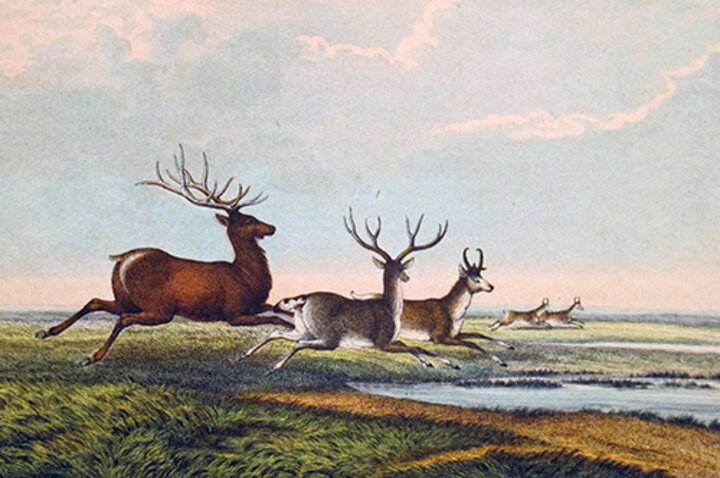
Denizens: Wildlife on the Western Frontier
February 5 – June 25, 2016
An Exhibition of Vintage Engravings 1770-1902
Curated by Lee Silliman, a spectrum of original nineteenth century engravings of wildlife that graced the American West will be on view. Images published in Harper’s Weekly, Frank Leslie’s Illustrated Newspaper, The Illustrated London News, and other historical sources illuminate the native species and their interaction with humans. Included in this menagerie are bears, bison, elk, pronghorn antelope, bighorn sheep, mountain goats, moose, wolves, beaver, cougars, wolverines, eagles, osprey, rattlesnakes, and even (feral) wild horses. These fauna are portrayed in their natural habitat or as the object of mankind’s penchant to hunt them for food, clothing, or sport. The panoply of scenes includes dramatic surprise encounters between man and animal, stealthy approach by hunters, conflicts between predator and prey species, a stampede from a prairie fire, Native American veneration of wildlife, and faunal portraits set in their natural habitat.
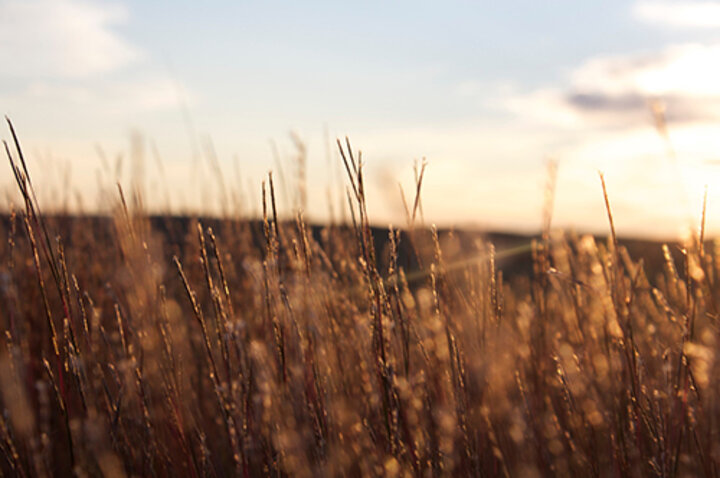
From This Grass Earth
September 1, 2015 - January 30, 2016
Photography and Poetry
From This Grass Earth celebrates the wild and immense beauty of the North American grasslands by exploring the legacy of stewards of the Great Plains landscape. Through a marriage of art, science, and poetry, visitors can experience and engage with the landscape through a myriad of aesthetic, scientific, and ecological lenses.
The collaborative exhibition features photographs from the Rediscover the Prairie expedition by Sebastian Tsocanos, photographs and poems written on the trail by Robin Walter, graphics compiled by the World Wildlife Fund that articulate ecological trends underway in North America’s grasslands, and an interactive interface that allows viewers to identify the threats facing the Great Plains ecoregion.
From This Grass Earth aims to increase awareness of a critically endangered landscape and excite a deeper understanding, appreciation, and engagement with the natural world and our place within it. For more information about the project, please visit: http://www.rediscovertheprairie.org. This exhibition was made possible with the support of the Nebraska Arts Council and the Nebraska Cultural Endowment.
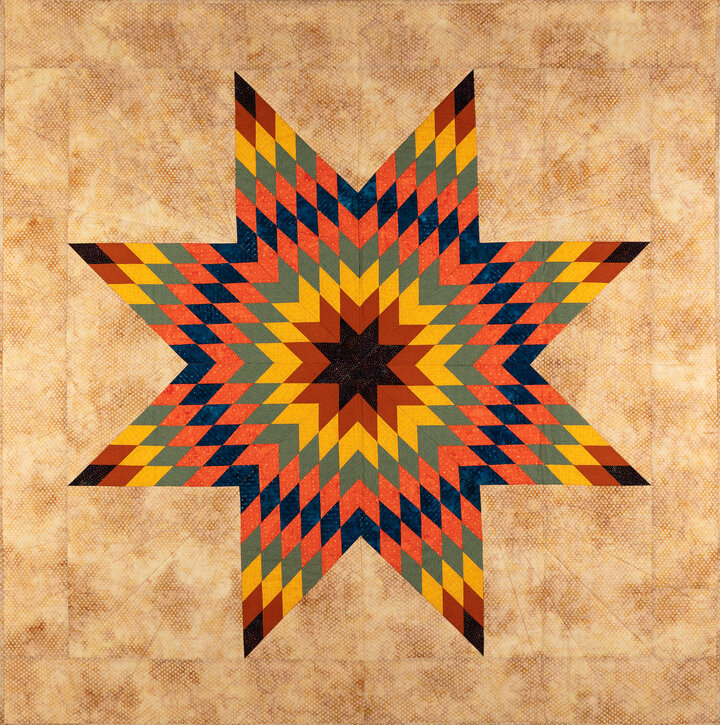
Gwen Westerman, Plains Sunset
We Are Star People
September 1, 2015 - January 30, 2016
The Art and Poetry of Gwen Westerman
Recent work by Gwen Westerman, 2014 Contemporary Indigeneity Exhibition Prize winner, features unique quilts and textiles alongside poetry inspired by personal connections to her Dakota family history. Dr. Westerman is a professor of English at Minnesota State University, Mankato. She co-authored MniSota Makoce: The Land of the Dakota, with Bruce White, which won a Minnesota Book Award and has published a collection of poetry written in Dakota and English entitled Follow the Blackbirds.
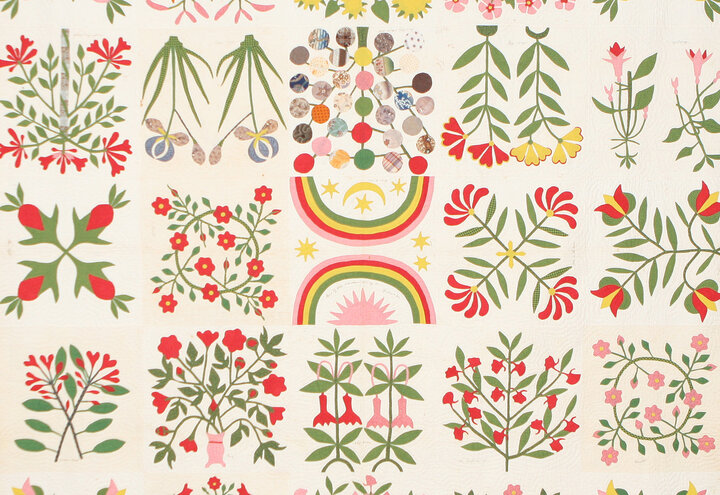
Homefront & Battlefield
February 3 - June 27, 2015
Quilts and Context in the Civil War
In collaboration with the Nebraska State Historical Society and the American Textile History Museum, the Great Plains Art Museum will host the traveling exhibition of Civil War era quilts, clothing, textiles, and related objects contributing to the sesquicentennial commemoration of the American Civil War (1861-65.) Homefront & Battlefield: Quilts & Context in the Civil War connects material objects to deeply moving and insightful personal stories about the war, its causes, and its aftermath with the broader national context. Textiles were integral to the Civil War—physically, economically, ideologically, and emotionally—and linked soldiers and civilians. The exhibition and accompanying book build on recent scholarship in social and economic history to tell of the events that led to the war, the stories of men and women affected by the Civil War, and the opportunities and challenges that followed it.
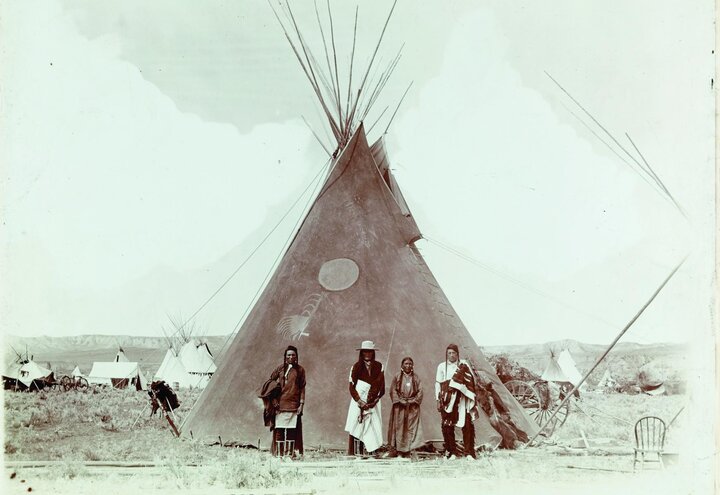
Select Photographs by Fred E. Miller: Photographer of the Crows
January 13 - March 28, 2015
As part of the 4th Biennial Lincoln Photofest, a selection of photographs from the Fred E. Miller photograph collection on loan from the Carroll and Nancy O'Connor Foundation will be featured in the Lentz Gallery. Between 1898 and 1912, Fred E. Miller photographed the Crow in Montana. Miller’s images provide an intimate portrait of the Crow during what some have considered the last years of their wholly traditional plains life.
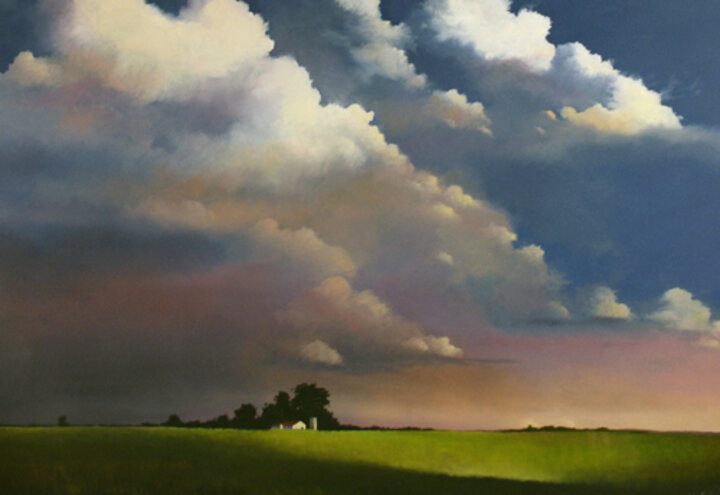
Narrow All Horizons
August 1 - December 21, 2014
Selected Works from the Permanent Collection and Recent Photographs by Jan Christensen
Striking images by Christensen complement an array of paintings, photographs, and prints from the museum's collection. Highlighting artworks with low horizon lines and expansive vistas, the exhibition celebrates the endless skyline characteristic of Great Plains landscapes. Narrow All Horizons illustrates how the American Great Plains captured the imagination of artists from the early 20th Century until today. The landscapes vary in media and also incorporate several artistic styles ranging from realism to abstraction.
Cinematic Framing of the West
May 2014 - February 2015
At the beginning of the 20th century, the Western was one of the most popular genres of silent film. It has since developed through many revivals from the Classic Westerns of the forties to the Spaghetti and Contemporary Westerns of the sixties and seventies. It provided action, scenic settings, and colorful uniforms and costumes. The Western movie symbolizes man's conquest of the wilderness in the name of civilization and confiscation of the territorial rights of the original inhabitants of the frontier, Native Americans. These films play an important role in shaping ethnic and national identities, and create and perpetuate national stereotypes. Although we might not agree with the depictions of Native Americans in westerns, understanding Hollywood's as America's stereotype of these people is true of its time period. Unfortunately, this stereotypical image from Hollywood served as the iconic Native American for everyone who lived mid-20th century though many earlier films were far from accurate. This exhibition showcases five elements of a western film shown through the lens of our permanent collection.
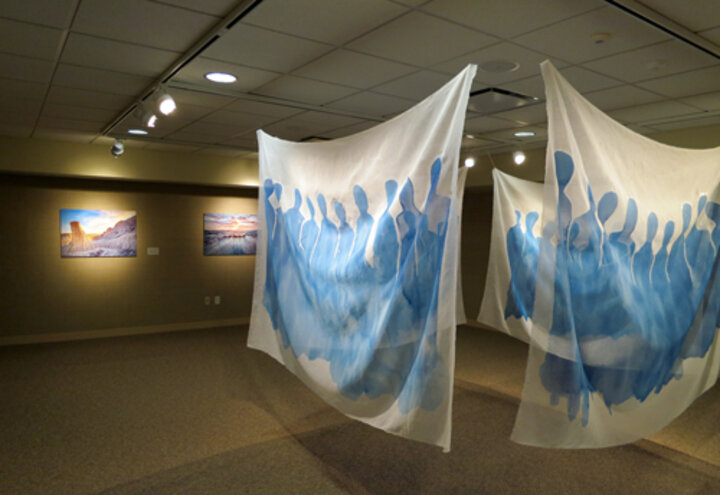
Contemporary Indigeneity: The New Art of the Great Plains
June 1 - July 27, 2014
Contemporary Indigeneity included individuals whose work expresses the texture of Native American life in the Great Plains today. Exhibited works were selected by a jury. Artist Jaune Quick-to-See Smith awarded cash prizes during the exhibit’s First Friday opening.
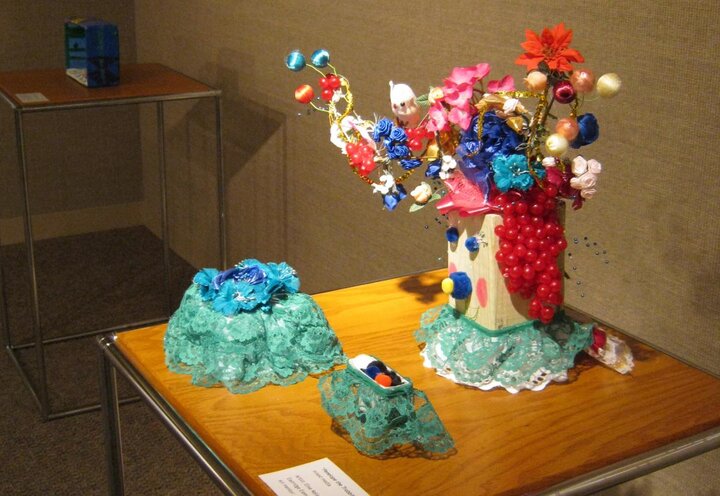
LPS Visual Arts Mentoring Program
April 11 - 30, 2014
Featured works of art by the 31 participants of the Lincoln Public Schools Visual Arts Mentor Program.
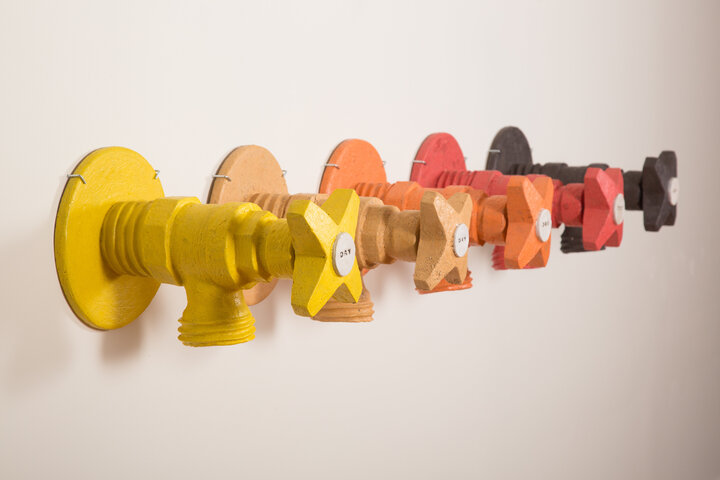
Dry Times: Ceramics by Jess Benjamin
March 14 - May 18, 2014
“Dry Times” by ceramic artist Jess Benjamin focused on water usage in the Great Plains, a regional concern related the phenomenon of global drought. In the west gallery, an exhibition titled "Drought Interpretations" was curated by Liz Ingraham, UNL Art & Art History featured items from Arlee Barr, Amanda Breitbach, Kim Kopp, Launa Bacon, and Stacy Asher. Both shows were timed to coincide with the 2014 Great Plains Symposium on drought.
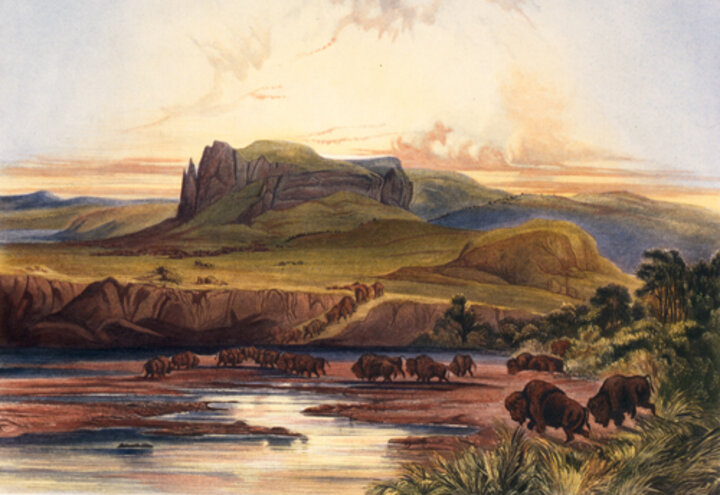
The Maximilian-Bodmer Expedition: Travels in the Interior of North America, 1832-1834
January 2 - February 23, 2014
Karl Bodmer’s vivid reflection of the landscapes, wildlife, frontier settlements, and American Indian peoples that he and Prince Maximilian of Wied encountered during their expedition along the Upper Missouri River. Made possible with support from the Nebraska Arts Council, the Nebraska Cultural Endowment, and the Richard P. Kimmell and Laurine Kimmel charitable Foundation, Inc.
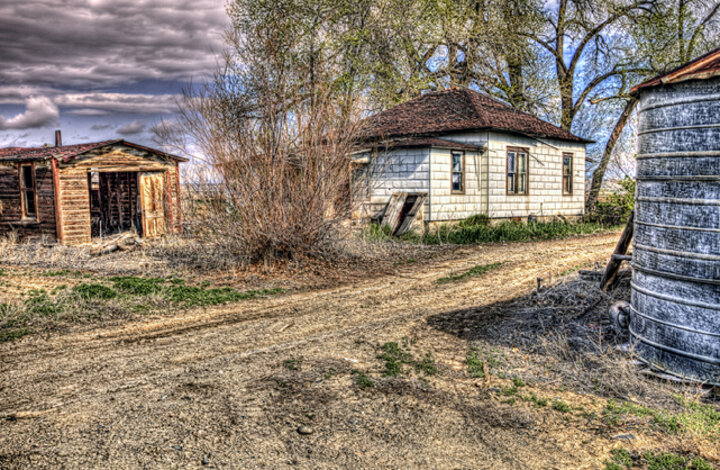
Randy Waln: The Degeneration of the Family Farm
September 30 - December 15, 2013, 2013
The move away from farming of successive generations and the decay of the family farmstead.
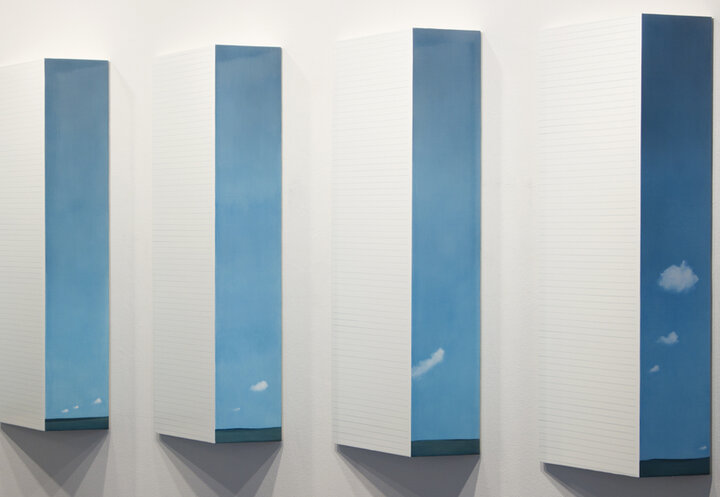
David Sebberson: Glimpsed Space; Forgotten Place
August 2 - September 22, 2013
Sebberson's art focuses on the relationship between the environment and cultures that have inhabited it, and the implications of these relationships.
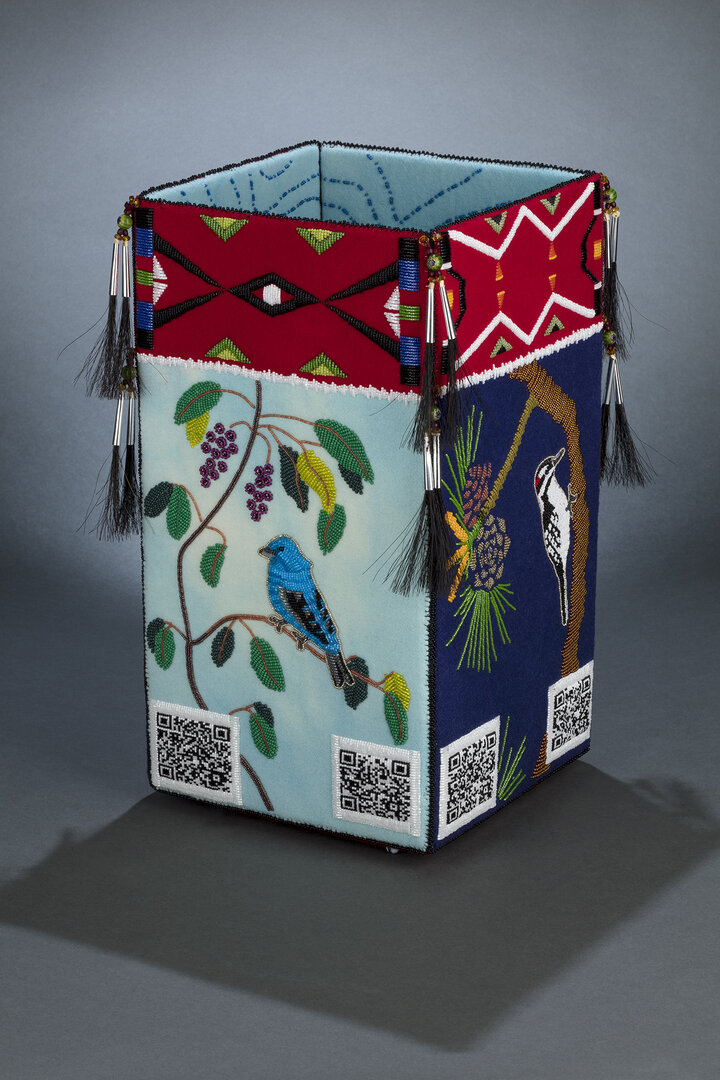
Molly Murphy Adams, Relative Position
Molly Murphy Adams
April 23 - May 3, 2013, exhibit extended until June 15, 2013
Elizabeth Rubendall Artist-in-Residence Molly Murphy Adams, beadwork. During her residency, Murphy Adams created a sculptural beadwork that became part of the museum’s permanent collection; The commissioned artwork blended Native and non-Native imagery and patterns including parflesche designs, cartography, historic events and flora and fauna from the Great Plains region.
Spurs & Spitfire: Humor of the American West
March 2013 - March 2014
From the Great Plains Art Museum collection.
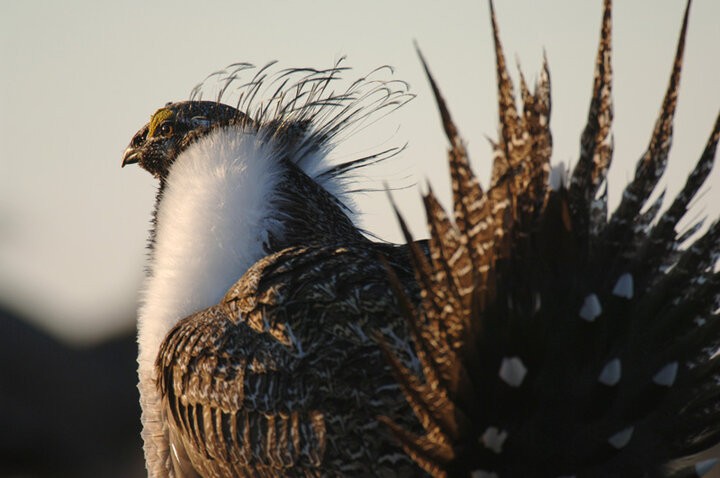
The Great Plains: America’s Lingering Wild
January 4 - March 30, 2013
Photographs by Michael Forsberg.
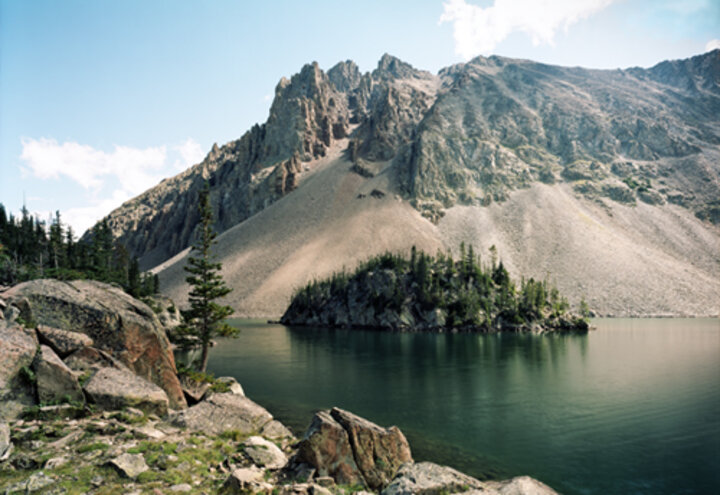
Westward Bound: Big Color
Oct. 10 - Dec. 9, 2012
Landscape photographs by Michael Farrell
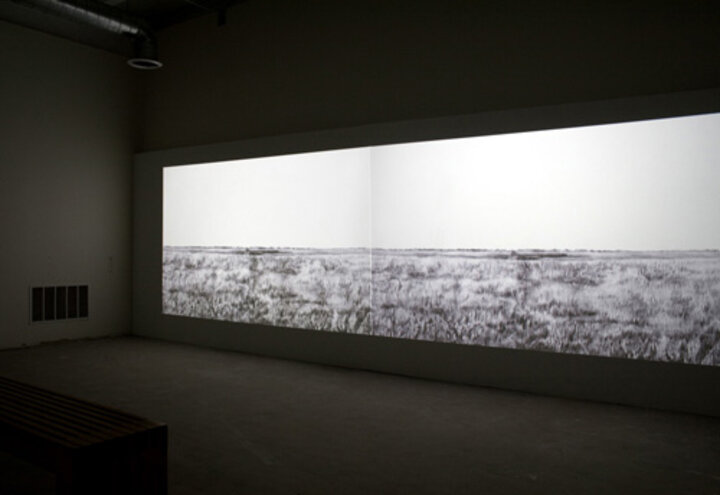
Open Richness
Aug. 3 - Sept. 23, 2012
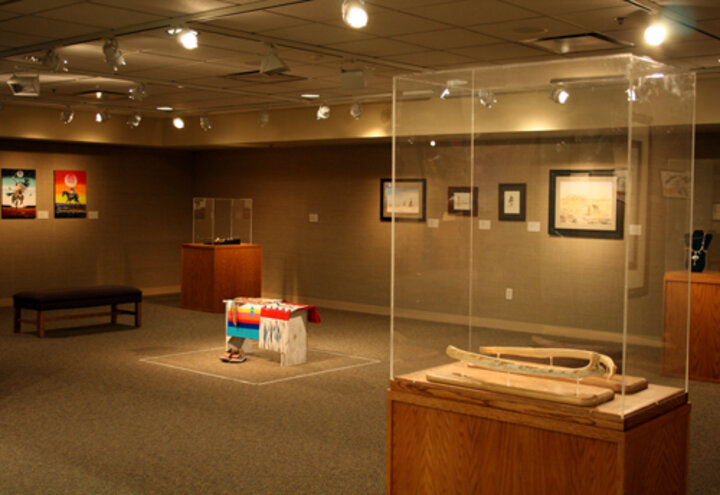
Contemporary Indigeneity: The New Art of the Great Plains
June 1 - July 29, 2012
The first of a recurring juried exhibition of Native American art
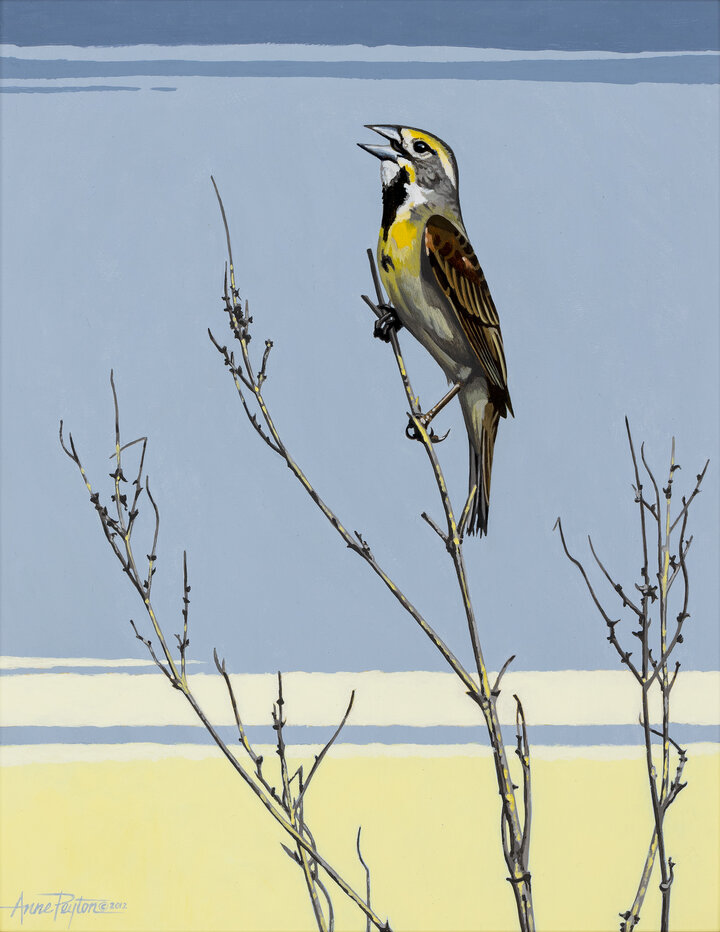
Longed for Still: The Avian Art of Anne Peyton
April 24 - May 27, 2012
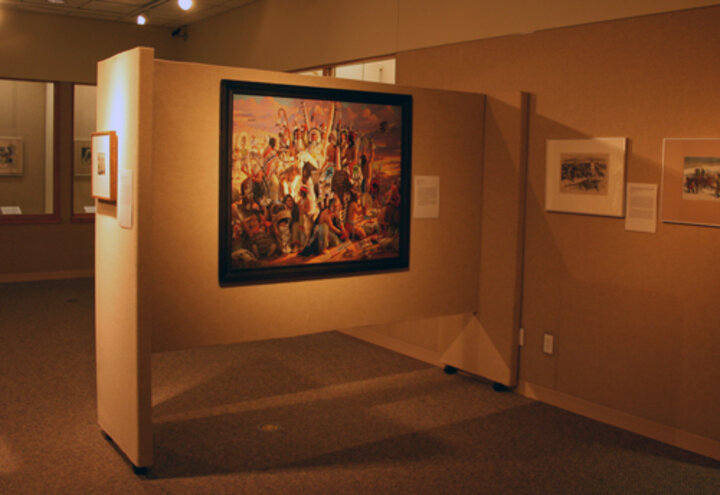
Confrontations and Conciliatory Acts: Art & Artifacts of United States and Sioux Nation Conflict
March 2012 - March 2013
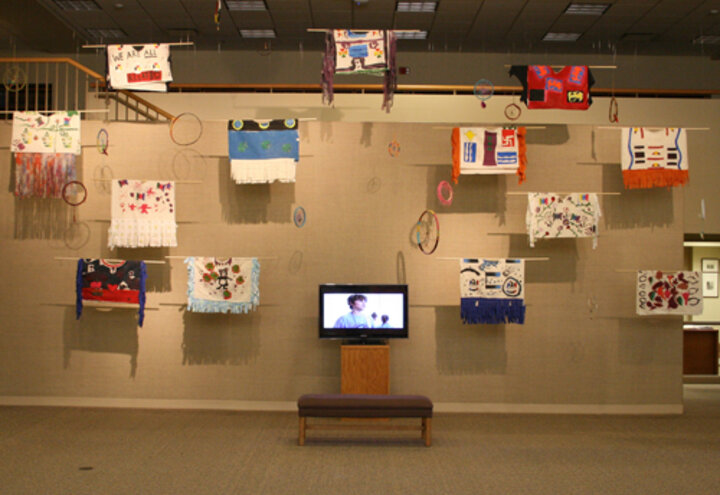
Modern Traditions: Seeing with New Eyes
Jan. 5 - April 22, 2012
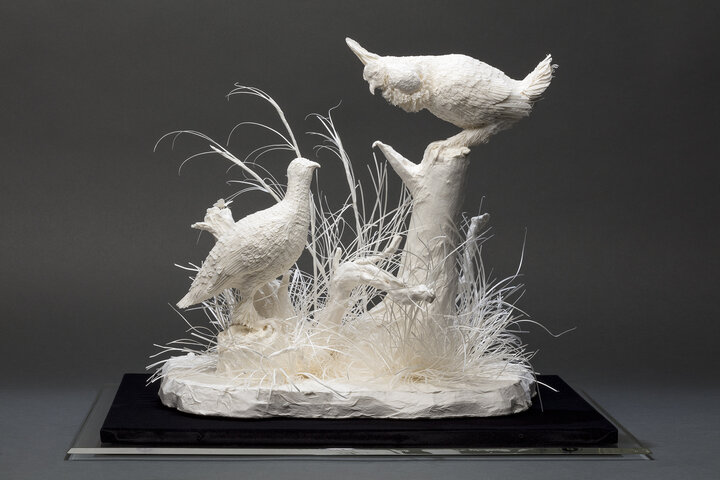
Paper Plains: The Cast Paper Sculpture of Allen and Patty Eckman
March 2012-March 2013
Paper sculpture, Artist-in-Residence program
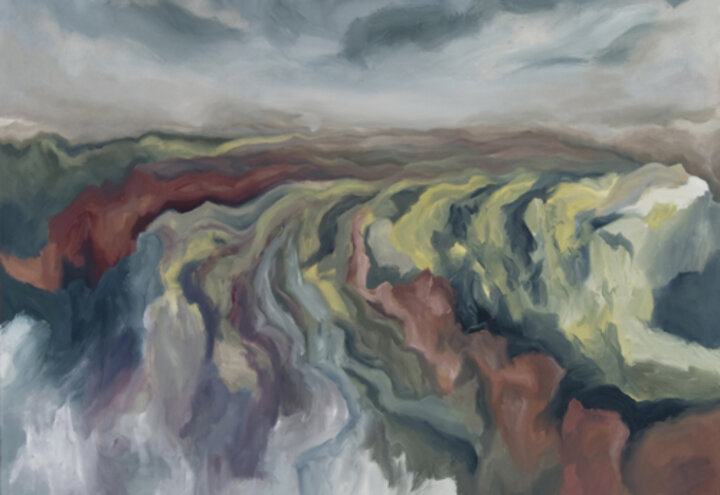
Marking the Prairie Sublime: Paintings and Prints by Jonathan Goodding
Jan. 3 - March 25, 2012
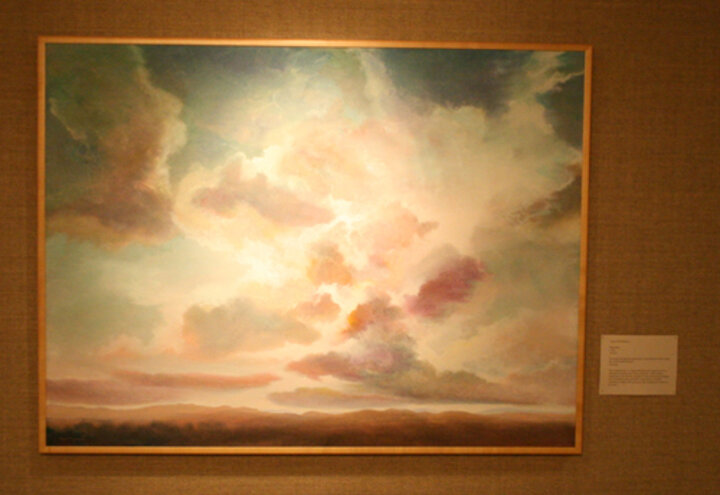
Transported with Wonder
Jan. 3 - March 25, 2012
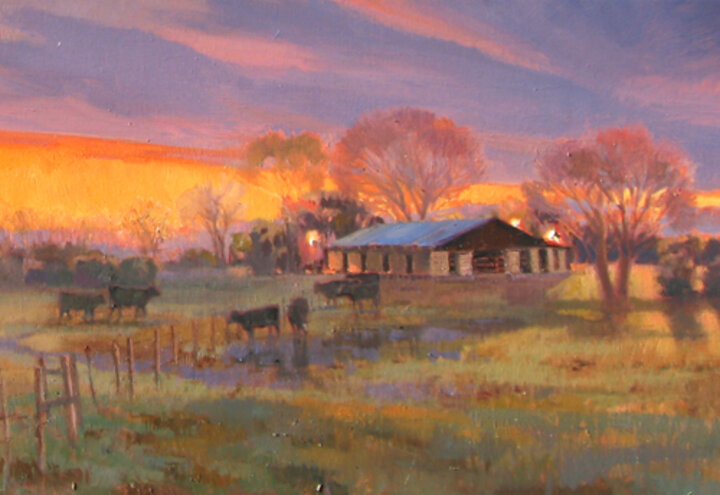
Passing America:
The Great Plains
Oct. 8 - Dec. 11, 2011
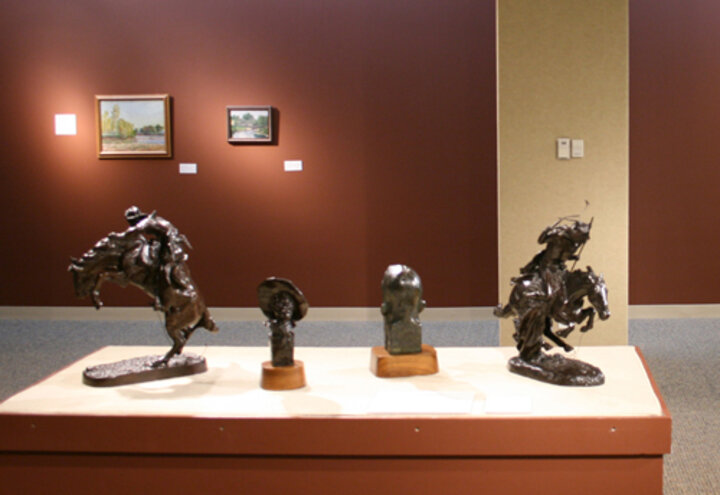
Amassing Artists: The Collecting Compulsions of the Christliebs
August 2010 - December 2011
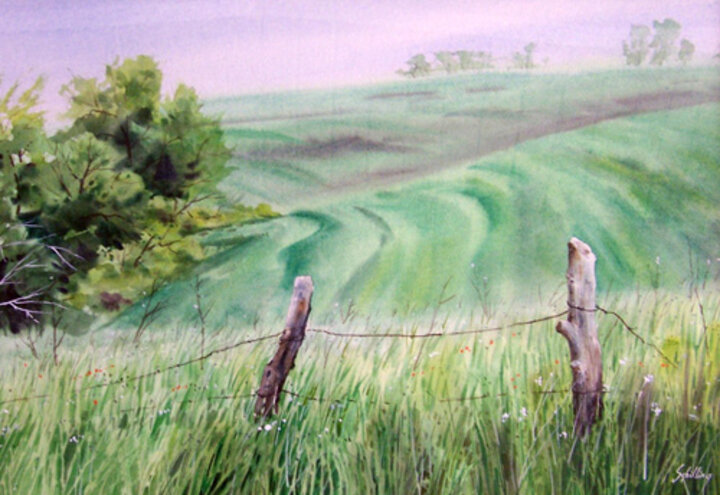
Portraits of the Prairie - The Land that Inspired Willa Cather
April 2011
Double Vision: New Works by Hulleah Tsinahjinnie
Jan. 3 - April 14, 2011
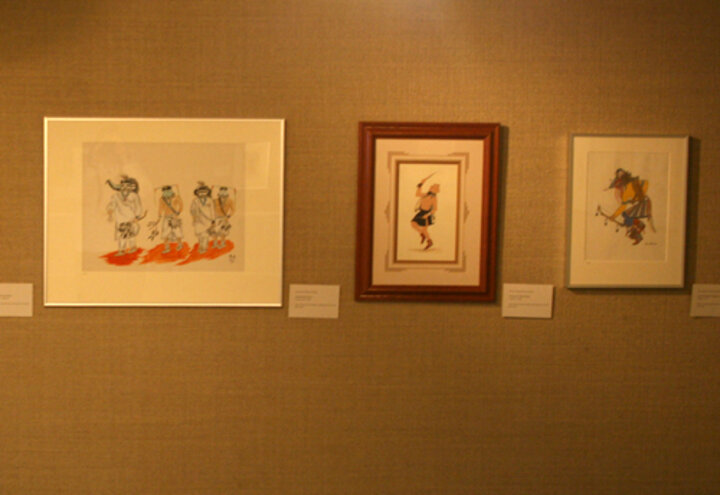
Ceremonial Dancing and Collaborative Spirits: Modern Native American Art
Jan. 3 - March 27, 2011